

NASA Voyager 2 Could Be Nearing Interstellar Space
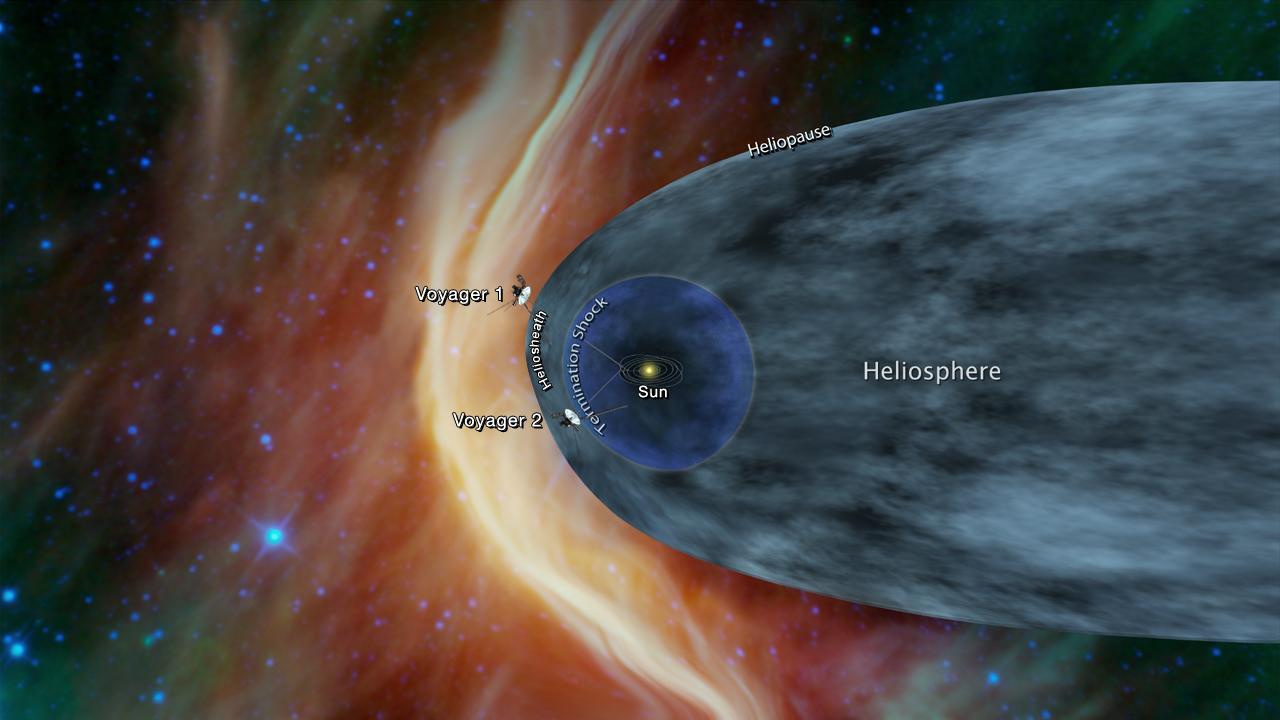
NASA's Voyager 2 probe, currently on a journey toward interstellar space, has detected an increase in cosmic rays that originate outside our solar system. Launched in 1977, Voyager 2 is a little less than 11 billion miles (about 17.7 billion kilometers) from Earth, or more than 118 times the distance from Earth to the Sun.
Since 2007 the probe has been traveling through the outermost layer of the heliosphere -- the vast bubble around the Sun and the planets dominated by solar material and magnetic fields. Voyager scientists have been watching for the spacecraft to reach the outer boundary of the heliosphere, known as the heliopause. Once Voyager 2 exits the heliosphere, it will become the second human-made object, after Voyager 1, to enter interstellar space.
Since late August, the Cosmic Ray Subsystem instrument on Voyager 2 has measured about a 5 percent increase in the rate of cosmic rays hitting the spacecraft compared to early August. The probe's Low-Energy Charged Particle instrument has detected a similar increase in higher-energy cosmic rays.
Cosmic rays are fast-moving particles that originate outside the solar system. Some of these cosmic rays are blocked by the heliosphere, so mission planners expect that Voyager 2 will measure an increase in the rate of cosmic rays as it approaches and crosses the boundary of the heliosphere.
In May 2012, Voyager 1 experienced an increase in the rate of cosmic rays similar to what Voyager 2 is now detecting. That was about three months before Voyager 1 crossed the heliopause and entered interstellar space.
However, Voyager team members note that the increase in cosmic rays is not a definitive sign that the probe is about to cross the heliopause. Voyager 2 is in a different location in the heliosheath -- the outer region of the heliosphere -- than Voyager 1 had been, and possible differences in these locations means Voyager 2 may experience a different exit timeline than Voyager 1.
The fact that Voyager 2 may be approaching the heliopause six years after Voyager 1 is also relevant, because the heliopause moves inward and outward during the Sun's 11-year activity cycle. Solar activity refers to emissions from the Sun, including solar flares and eruptions of material called coronal mass ejections. During the 11-year solar cycle, the Sun reaches both a maximum and a minimum level of activity.
"We're seeing a change in the environment around Voyager 2, there's no doubt about that," said Voyager Project Scientist Ed Stone, based at Caltech in Pasadena. "We're going to learn a lot in the coming months, but we still don't know when we'll reach the heliopause. We're not there yet -- that's one thing I can say with confidence."
The Voyager spacecraft were built by NASA's Jet Propulsion Laboratory in Pasadena, California, which continues to operate both. JPL is a division of Caltech. The Voyager missions are a part of the NASA Heliophysics System Observatory, managed by the Heliophysics Division of the Science Mission Directorate in Washington.
For more information about the Voyager spacecraft, visit:
- https://www.nasa.gov/voyager
- https://voyager.jpl.nasa.gov
News Media Contacts Calla Cofield Jet Propulsion Laboratory, Pasadena, Calif. 626-808-2469 [email protected] Jia-Rui Cook Jet Propulsion Laboratory, Pasadena, Calif. 818-354-0724 [email protected] Karen Fox NASA Headquarters, Washington 301-286-6284 [email protected]
News Release: 2018-232

Voyager 1 and Voyager 2
Where are they now.
Both Voyager 1 and Voyager 2 have reached "interstellar space" and each continue their unique journey deeper into the cosmos. In NASA's Eyes on the Solar System app, you can see the actual spacecraft trajectories of the Voyagers updated every five minutes.
Mission Status
Instrument status.
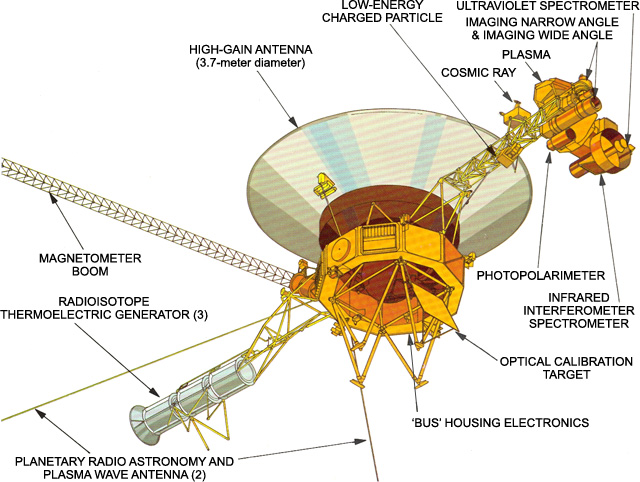
Voyager 1 Present Position
Voyager 2 present position, voyager's grand tour: 1977 - today, discover more topics from nasa.


An illustration shows the position of NASA's Voyager 1 and Voyager 2 probes outside of the heliosphere, a protective bubble created by the sun that extends well past the orbit of Pluto.
Interstellar space even weirder than expected, NASA probe reveals
The spacecraft is just the second ever to venture beyond the boundary that separates us from the rest of the galaxy.
In the blackness of space billions of miles from home, NASA’s Voyager 2 marked a milestone of exploration, becoming just the second spacecraft ever to enter interstellar space in November 2018. Now, a day before the anniversary of that celestial exit, scientists have revealed what Voyager 2 saw as it crossed the threshold—and it’s giving humans new insight into some of the big mysteries of our solar system.
The findings, spread across five studies published today in Nature Astronomy , mark the first time that a spacecraft has directly sampled the electrically charged hazes, or plasmas, that fill both interstellar space and the solar system’s farthest outskirts. It’s another first for the spacecraft, which was launched in 1977 and performed the first—and only—flybys of the ice giant planets Uranus and Neptune. ( Find out more about the Voyager probes’ “grand tour”—and why it almost didn’t happen .)
See pictures from Voyager 2's solar system tour

Voyager 2’s charge into interstellar space follows that of sibling Voyager 1, which accomplished the same feat in 2012. The two spacecrafts’ data have many features in common, such as the overall density of the particles they’ve encountered in interstellar space. But intriguingly, the twin craft also saw some key differences on their way out—raising new questions about our sun’s movement through the galaxy.
“This has really been a wonderful journey,” Voyager project scientist Ed Stone , a physicist at Caltech, said in a press briefing last week.
“It’s just really exciting that humankind is interstellar,” adds physicist Jamie Rankin , a postdoctoral researcher at Princeton University who wasn’t involved with the studies. “We have been interstellar travelers since Voyager 1 crossed, but now, Voyager 2’s cross is even more exciting, because we can now compare two very different locations ... in the interstellar medium.”
Inside the bubble
To make sense of Voyager 2’s latest findings, it helps to know that the sun isn’t a quietly burning ball of light. Our star is a raging nuclear furnace hurtling through the galaxy at about 450,000 miles an hour as it orbits the galactic center.
Nat Geo Kids Back-To-School Exclusive Offer
Get up to 4 bonus issues!
The sun is also rent through with twisted, braided magnetic fields and, as a result, its surface constantly throws off a breeze of electrically charged particles called the solar wind. This gust rushes out in all directions, carrying the sun’s magnetic field with it. Eventually, the solar wind smashes into the interstellar medium, the debris from ancient stellar explosions that lurks in the spaces between stars.
Like oil and water, the solar wind and the interstellar medium don’t perfectly mix, so the solar wind forms a bubble within the interstellar medium called the heliosphere. Based on Voyager data, this bubble extends about 11 billion miles from the sun at its leading edge, surrounding the sun, all eight planets, and much of the outer objects orbiting our star. Good thing, too: The protective heliosphere shields everything inside it, including our fragile DNA, from most of the galaxy’s highest-energy radiation.
The heliosphere’s outermost edge, called the heliopause, marks the start of interstellar space. Understanding this threshold has implications for our picture of the sun’s journey through the galaxy, which in turn can tell us more about the situations of other stars scattered across the cosmos.
“We are trying to understand the nature of that boundary, where these two winds collide and mix,” Stone said during the briefing. “How do they mix, and how much spillage is there from inside to outside the bubble, and from outside the bubble to inside?”
Scientists got their first good look at the heliopause on August 25, 2012, when Voyager 1 first entered interstellar space. What they began to see left them scratching their heads. For instance, researchers now know that the interstellar magnetic field is about two to three times stronger than expected, which means, in turn, that interstellar particles exert up to ten times as much pressure on our heliosphere than previously thought.
“It is our first platform to actually experience the interstellar medium, so it is quite literally a pathfinder for us,” says heliophysicist Patrick Koehn , a program scientist at NASA headquarters.
You May Also Like

How a rare, ‘once-in-20-years’ aurora formed at the North Pole

A supersonic jet chased a solar eclipse across Africa—for science

2024 has seen record-breaking auroras–and there’s more to come
Leaky boundary.
But for all that Voyager 1 upended expectations, its revelations were incomplete. Back in 1980, its instrument that measured the temperature of plasmas stopped working. Voyager 2’s plasma instrument is still working just fine, though, so when it crossed the heliopause on November 5, 2018, scientists could get a much better look at this border.
For the first time, researchers could see that as an object gets within 140 million miles of the heliopause, the plasma surrounding it slows, heats up, and gets more dense. And on the other side of the boundary, the interstellar medium is at least 54,000 degrees Fahrenheit, which is hotter than expected. However, this plasma is so thin and diffuse, the average temperature around the Voyager probes remains extremely cold.
In addition, Voyager 2 confirmed that the heliopause is one leaky border—and the leaks go both ways. Before Voyager 1 passed through the heliopause, it zoomed through tendrils of interstellar particles that had punched into the heliopause like tree roots through rock. Voyager 2, however, saw a trickle of low-energy particles that extended more than a hundred million miles beyond the heliopause.
Another mystery appeared as Voyager 1 came within 800 million miles of the heliopause, where it entered a limbo-like area in which the outbound solar wind slowed to a crawl. Before it crossed the heliopause, Voyager 2 saw the solar wind form an altogether different kind of layer that, oddly, was nearly the same width as the stagnant one seen by Voyager 1.
“That is very, very weird,” Koehn says. “It really shows us that we need more data.”
Interstellar sequel?
Solving these puzzles will require a better view of the heliosphere as a whole. Voyager 1 exited near the heliosphere’s leading edge, where it collides with the interstellar medium, and Voyager 2 exited along its left flank. We have no data on the heliosphere’s wake, so its overall shape remains a mystery. The interstellar medium’s pressure might keep the heliosphere roughly spherical, but it’s also possible that it has a tail like a comet—or that it is shaped like a croissant .
But while other spacecraft are currently outward bound, they won’t be able to return data from the heliopause. NASA’s New Horizons spacecraft is zooming out of the solar system at more than 31,000 miles an hour , and when it runs out of power in the 2030s, it’ll fall silent more than a billion miles short of the heliosphere’s outer edge. That’s why Voyager scientists and others are calling for a follow-up interstellar probe . The goal: a 50-year, multi-generation mission that explores the outer solar system on its way into unexplored regions beyond the solar wind.
“Here's an entire bubble, [and] we only crossed it with two points,” study coauthor Stamatios Krimigis , the emeritus head of the Johns Hopkins University Applied Physics Laboratory's space department, said at the briefing. “Two examples are not enough.”
A new generation of scientists is eager to run with the baton—including Rankin, who did her Ph.D. at Caltech with Voyager 1’s interstellar data with Stone as her adviser.
“It was amazing to work on this cutting-edge data from spacecraft that were launched before I was born and still doing amazing science,” she says. “I’m just really thankful for all the people who have spent so much time on Voyager.”
Related Topics
- SPACE EXPLORATION

U.S. returns to the moon as NASA's Odysseus successfully touches down

Inflammation isn't always bad. Here's how we can use it to heal.

Apollo moon rocks reveal secrets of the moon’s thin ‘atmosphere’

Why go back to the moon? NASA’s Artemis program has even bigger ambitions
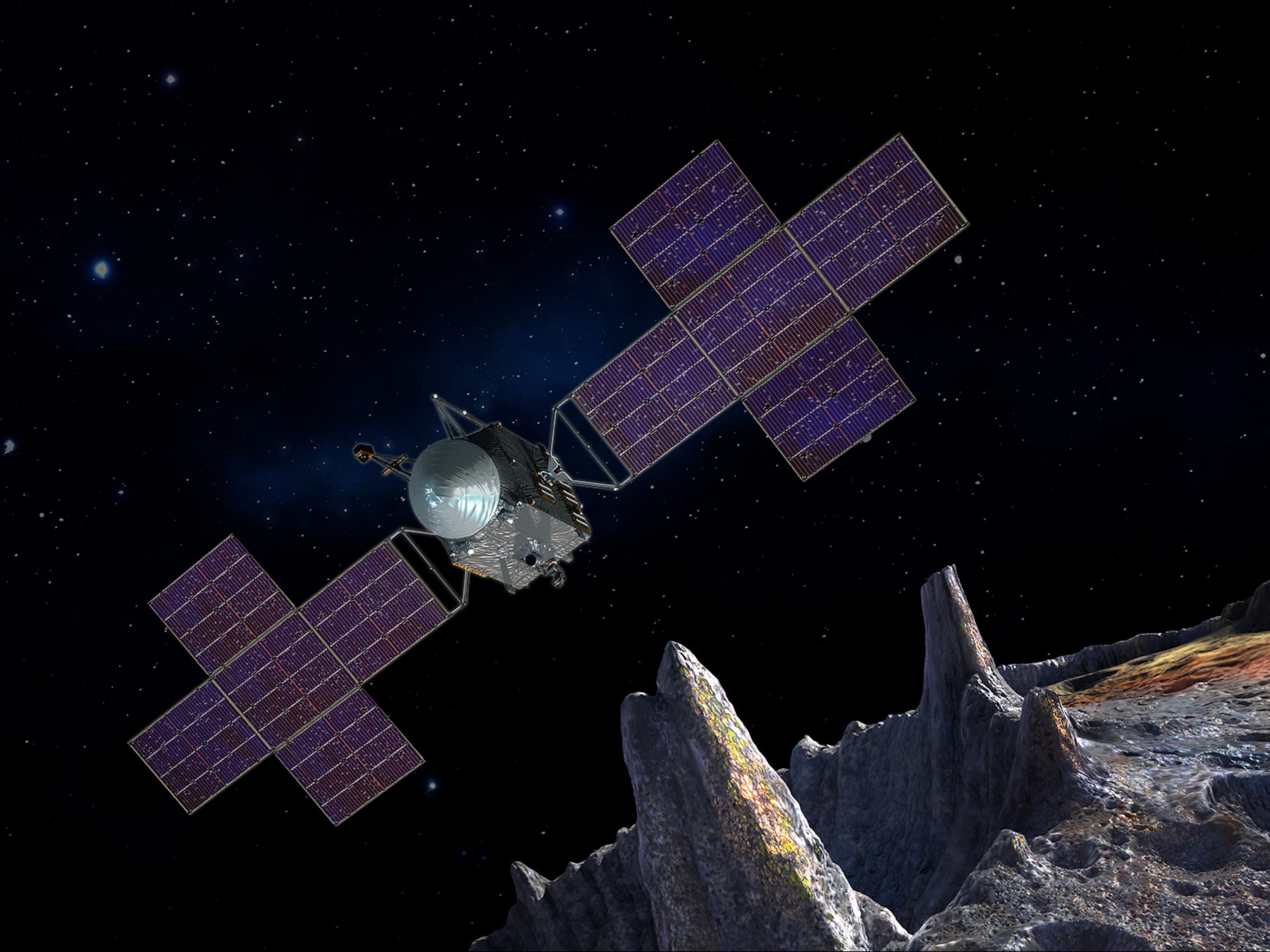
Humans are about to explore a metal-rich asteroid for the first time. Here's why.
- Interactive Graphic
- Environment
- Paid Content
History & Culture
- History & Culture
- History Magazine
- The Big Idea
- Mind, Body, Wonder
- Terms of Use
- Privacy Policy
- Your US State Privacy Rights
- Children's Online Privacy Policy
- Interest-Based Ads
- About Nielsen Measurement
- Do Not Sell or Share My Personal Information
- Nat Geo Home
- Attend a Live Event
- Book a Trip
- Inspire Your Kids
- Shop Nat Geo
- Visit the D.C. Museum
- Learn About Our Impact
- Support Our Mission
- Advertise With Us
- Customer Service
- Renew Subscription
- Manage Your Subscription
- Work at Nat Geo
- Sign Up for Our Newsletters
- Contribute to Protect the Planet
Copyright © 1996-2015 National Geographic Society Copyright © 2015-2024 National Geographic Partners, LLC. All rights reserved
NASA Voyager 2 Could Be Nearing Interstellar Space

NASA's Voyager 2 probe, currently on a journey toward interstellar space, has detected an increase in cosmic rays that originate outside our solar system.
NASA's Voyager 2 probe, currently on a journey toward interstellar space, has detected an increase in cosmic rays that originate outside our solar system. Launched in 1977, Voyager 2 is a little less than 11 billion miles (about 17.7 billion kilometers) from Earth, or more than 118 times the distance from Earth to the Sun.
Since 2007 the probe has been traveling through the outermost layer of the heliosphere -- the vast bubble around the Sun and the planets dominated by solar material and magnetic fields. Voyager scientists have been watching for the spacecraft to reach the outer boundary of the heliosphere, known as the heliopause. Once Voyager 2 exits the heliosphere, it will become the second human-made object, after Voyager 1, to enter interstellar space.
Since late August, the Cosmic Ray Subsystem instrument on Voyager 2 has measured about a 5 percent increase in the rate of cosmic rays hitting the spacecraft compared to early August. The probe's Low-Energy Charged Particle instrument has detected a similar increase in higher-energy cosmic rays.
Cosmic rays are fast-moving particles that originate outside the solar system. Some of these cosmic rays are blocked by the heliosphere, so mission planners expect that Voyager 2 will measure an increase in the rate of cosmic rays as it approaches and crosses the boundary of the heliosphere.
In May 2012, Voyager 1 experienced an increase in the rate of cosmic rays similar to what Voyager 2 is now detecting. That was about three months before Voyager 1 crossed the heliopause and entered interstellar space.
However, Voyager team members note that the increase in cosmic rays is not a definitive sign that the probe is about to cross the heliopause. Voyager 2 is in a different location in the heliosheath -- the outer region of the heliosphere -- than Voyager 1 had been, and possible differences in these locations means Voyager 2 may experience a different exit timeline than Voyager 1.
The fact that Voyager 2 may be approaching the heliopause six years after Voyager 1 is also relevant, because the heliopause moves inward and outward during the Sun's 11-year activity cycle. Solar activity refers to emissions from the Sun, including solar flares and eruptions of material called coronal mass ejections. During the 11-year solar cycle, the Sun reaches both a maximum and a minimum level of activity.
"We're seeing a change in the environment around Voyager 2, there's no doubt about that," said Voyager Project Scientist Ed Stone, based at Caltech in Pasadena. "We're going to learn a lot in the coming months, but we still don't know when we'll reach the heliopause. We're not there yet -- that's one thing I can say with confidence."
The Voyager spacecraft were built by NASA's Jet Propulsion Laboratory in Pasadena, California, which continues to operate both. JPL is a division of Caltech. The Voyager missions are a part of the NASA Heliophysics System Observatory, managed by the Heliophysics Division of the Science Mission Directorate in Washington.
For more information about the Voyager spacecraft, visit:
https://www.nasa.gov/voyager
https://voyager.jpl.nasa.gov
News Media Contact
Calla Cofield / Jia-Rui Cook
Jet Propulsion Laboratory, Pasadena, Calif.
626-808-2469 / 818-354-0724
[email protected] / [email protected]
NASA Headquarters, Washington
202-358-1600
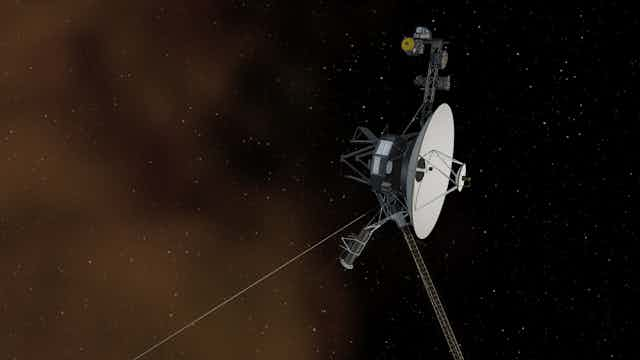
After 45 years, the 5-billion -year legacy of the Voyager 2 interstellar probe is just beginning
Associate Professor in Archaeology and Space Studies, Flinders University
Disclosure statement
Alice Gorman is a member of the Advisory Council of the Space Industry Association of Australia and Co-Chief Investigator of the International Space Station Archaeological Project.
Flinders University provides funding as a member of The Conversation AU.
View all partners
On August 20 1977, 45 years ago, an extraordinary spacecraft left this planet on a journey like no other. Voyager 2 was going to show us, for the first time, what the outer solar system planets looked like close-up. It was like sending a fly to New York City and asking it to report back.
Voyager 1 was launched after Voyager 2, on September 5. Attached to the flank of each Voyager was a Golden Record carrying greetings, sounds, images and music from Earth.
The spacecraft were more or less twins, but they had different trajectories and scientific instruments. While both flew by Jupiter and Saturn, Voyager 1 then sped onwards to interstellar space. Voyager 2 tarried to make the only visit ever to the ice giants, Uranus and Neptune.
The many-coloured worlds
Arriving at Uranus in 1986, Voyager 2 mapped pale blue-green clouds and a possible “dark spot”, which was later confirmed by the Hubble Space Telescope . There was an unexpected magnetic field , which dragged a corkscrew trail of particles behind the planet as it rolled in its orbit. Ten new moons were discovered, including the grey, cratered Puck , and two new coal-black rings.
Three years later Voyager 2 reached Neptune and sent home images of teal and cobalt clouds swirled by winds up to 18,000 kilometres per hour. A slate-coloured “great dark spot” indicated a storm the diameter of Earth. The largest moon, Triton, was blushed pink from methane ice and spouted geysers of frozen nitrogen .
No spacecraft has been back since.
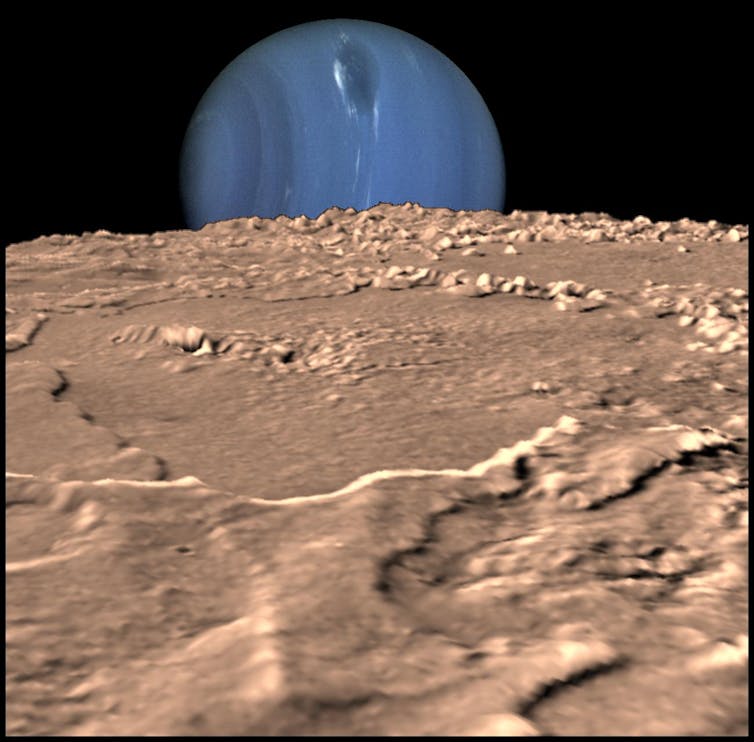
Messages to the future
Even more than these glimpses of the far icy planets, what fascinates people about the Voyager mission is the famous Golden Records . A committee led by visionary astronomer Carl Sagan worked for over a year to assemble materials to represent planet Earth. The music garners the most attention as the “mix tape for the universe”, but it’s not the only highlight.
One of the sounds of Earth is the manufacture of stone tools , or “knapping”. This is the most durable technology humans and their ancestors have devised, in use from around 3 million years ago to the present day. For most of human existence, the sound of stone striking stone to detach a sharp-edged cutting flake was heard daily in every community.
On the record, you can hear the thuds of stone against the sound of heartbeats.
In one of the 116 images, a Black scientist in a lab coat bends over a microscope, tiered earrings falling gracefully from her ears. The earrings were the subject of some debate: would a future alien viewer recognise the concept of “jewellery”? It was hoped this image, together with the photomicrograph of cells dividing in image 17, would help viewers figure out that the science of microscopy was known on our planet.
People recorded messages in 55 languages . Some are ancient languages, such as Akkadian and Hittite, not heard on Earth for thousands of years. The most common words used are “greetings”, “peace” and “friend”. The Portuguese greeting, spoken by Janet Sternberg, says simply “Peace and happiness to all”.
The long farewell
Finally, in 2018, Voyager 2 joined Voyager 1 beyond the heliopause, where the solar wind is turned back by winds from interstellar space. Our galaxy is 100,000 light-years across, and Voyager 2 is now just under 18 light-hours away from Earth.
Both spacecraft send reedy signals that wend their way between the planets to the three antennas which are still listening: Tidbinbilla , Goldstone and Madrid.
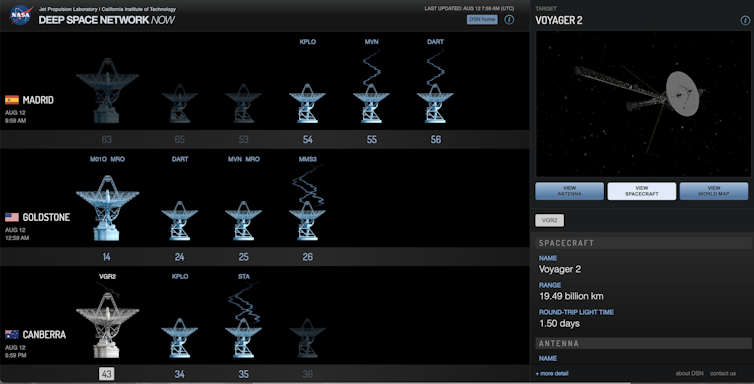
Before they can truly leave, the Voyagers will have to travel through the Oort Cloud , a vast, dark sphere of icy objects surrounding the solar system, for another 20,000 years.
Slowly, Voyager 2’s systems are being shut down to eke out the power as long as possible. But sometime in the 2030s there will be none left.
Even after Voyager 2 stops transmitting, it won’t be completely dead. The half-life of the plutonium-238 in its nuclear power source is 87.7 years, while that of the the small patch of uranium-238 coating on the Golden Record is 4.5 billion years. Both elements are slowly turning into lead.
The radioactive transmutation of the elements is a kind of reverse alchemy at a cosmic time scale. This process of becoming will not end until there is nothing on Voyager 2 left to be transformed.
Cultural significance
Constant bombardment by dust particles will gradually erode the surfaces of Voyager 2, likely at a higher rate than Voyager 1 because it’s travelling through different regions of interstellar space. However, its Golden Record should be at least partially legible after 5 billion years.
The Earth portrayed on the Golden Records will probably be unrecognisable even 100 years from now. The spacecraft and the records will remain as a fragmentary archaeological record for an unknowable future.
While the Golden Records are endlessly fascinating, the true cultural significance of the Voyagers lies in their location. The spacecraft are boundary markers showing the physical extent of human engagement with the universe.
When the Voyagers cease transmission, it will be like losing a sense. Telescopes can only show us so much: there is no substitute for being there.
Who will follow in their path?
- Solar system
- Space exploration
- interstellar exploration
- Interstellar space

Microsoft and Citrix Technical Consultant

Casual Facilitator: GERRIC Student Programs - Arts, Design and Architecture

Senior Lecturer, Digital Advertising

Manager, Centre Policy and Translation

Newsletter and Deputy Social Media Producer
We Finally Know What Happened When Voyager 2 Reached Interstellar Space
A few big takeaways from the craft's incredible journey.
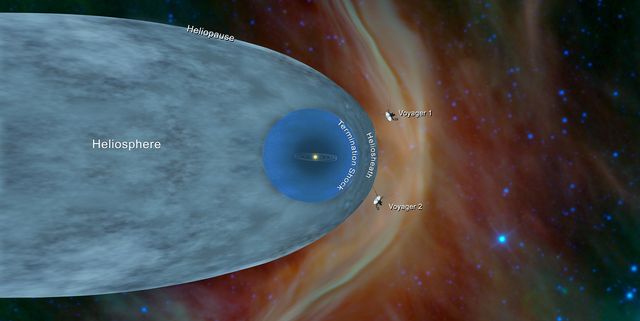
- The spacecraft reached the interstellar boundary between our solar system and interstellar space in 2018. Voyager 1 reached the boundary in 2012.
- Both spacecraft were launched in 1977, and have far surpassed scientists' expectations.
Scientists have finally analyzed data from Voyager 2’s journey to interstellar space and discovered a number of surprising differences—plus a few strange similarities.
Voyager 1 and 2 launched in August and October of 1977, respectively, and set out to explore the far reaches of the solar system and beyond. The spacecraft have revealed a vast amount of insight into distant planets and snapped pictures of previously undiscovered moons. Still, more than 40 years after their launch, they continue to provide scientists with an unparalleled look at the universe.
In 2012, Voyager 1 became the first spacecraft to reach interstellar space. Last year, Voyager 2 joined its companion in the interstellar medium, reaching the boundary set 119 times the Earth–sun distance away from Earth. The transition from our solar system to interstellar space, the researchers say, may take less than a day to cross. The data from Voyager 2’s crossing was published November 4 in a series of five papers in Nature Astronomy .
The heliopause is the theoretical boundary at which the sun’s solar wind meets interstellar winds, which are shot out from supernovae that have exploded millions of years ago. Additionally, galactic cosmic rays try to flow into our solar system, but only 30 percent of these rays actually reach Earth. Voyager 1 and 2 were also able to study changes in the magnetic fields within and outside of our solar system.
The two spacecraft reached interstellar space during different periods of solar activity, meaning conditions along the boundary were markedly different. Voyager 1 reached the interstellar boundary during the sun’s solar minimum, whereas Voyager 2 reached the boundary during the solar maximum, a period of heightened activity. Additionally, unlike its quicker counterpart, Voyager 2’s mission has largely taken place in Earth’s southern hemisphere.
The researchers also discovered that solar material was “leaking” out into the interstellar medium. “That was very different than what happened with Voyager 1, where hardly any material was leaking out,” said Tom Krimigis of John’s Hopkins’s Applied Physics Laboratory in an October 31 press conference.
In the case of Voyager 1, the team saw the opposite, where interstellar particles leaked into our solar system. The team hopes to reconvene to take a closer look at their data in the near future to understand how and why these particles slip out of the grasp of our solar system.
Another perplexing discovery? The direction of the magnetic fields both inside and outside of the heliopause is aligned, as was the case with Voyager 1. Leonard Burlaga of NASA Goddard Space Flight Center said scientists can dismiss the alignment of the magnetic fields once, but twice would be a remarkable coincidence. The strength of the magnetic field was stronger in interstellar space, the Voyager 2 found.
The scientists also discovered that the heliopause itself is much thinner and smoother than expected, and that the interstellar medium tucked close to the boundary layer, where solar and interstellar winds meet, is much hotter and unpredictable than expected. This newest research also revealed that the boundary layer itself may be more complex than initially thought, with multiple layers of different temperature, density, and speed.
Voyager 1 and 2 have roughly five years before they'll lose the use of their scientific instruments, said Ed Stone of the California Institute of Technology during the press conference. "When the two voyagers were launched, the space age was only 20 years old, Stone said. "So it was hard to know at that time that anything could last over 40 years."
There's still a lot left to explore, and the data dump has sparked a desire to explore faster, farther, and deeper into interstellar space.
Jennifer Leman is a science journalist and senior features editor at Popular Mechanics, Runner's World, and Bicycling. A graduate of the Science Communication Program at UC Santa Cruz, her work has appeared in The Atlantic, Scientific American, Science News and Nature. Her favorite stories illuminate Earth's many wonders and hazards.

.css-cuqpxl:before{padding-right:0.3125rem;content:'//';display:inline;} Deep Space .css-xtujxj:before{padding-left:0.3125rem;content:'//';display:inline;}

‘Cosmic Fireballs’ Could Explain The Unexplainable
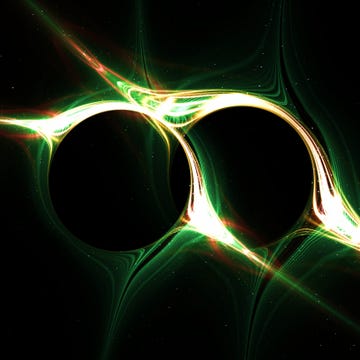
Is This the Answer to the 'Final Parsec Problem'?

Scientists Spots Rare ‘Missing Link’ Black Hole
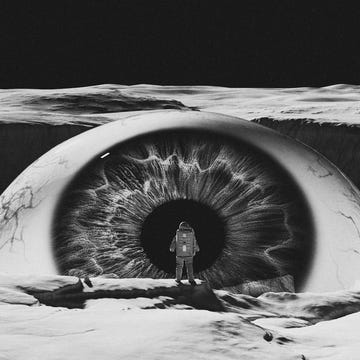
Strange Eyeball Super-Earth May Be Habitable

This Is What Flicked on the Lights of the Universe
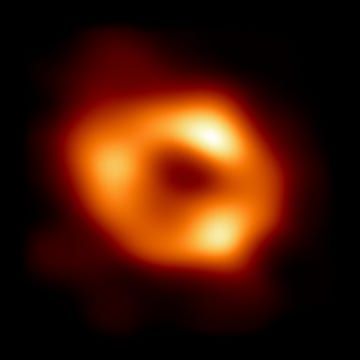
Scientists Spot the Milky Way’s ‘Exhaust Vent’
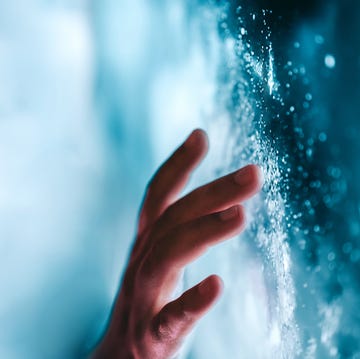
Can Quantum Physics Explain This Cosmic Mystery?

3 New Super-Earths Just Dropped

Can We Detect the Grav Waves of Alien Warp Drives?

Scientist Just Spotted a Black Hole 'Waking Up'

Microwave-Emitting Object Is a New Space Mystery

Advertisement
What Voyager 2 has learned since entering interstellar space

On November 5, 2018, NASA's Voyager 2 spacecraft became the second human-made object to cross into interstellar space. Now, scientists have shared the initial science gained by Voyager 2's historic crossing. (NASA/JPL-CALTECH/CNN)
On November 5, 2018, NASA's Voyager 2 spacecraft became the second human-made object to cross into interstellar space. Now, scientists have shared the initial science gained by Voyager 2's historic crossing.
However, just because the probes have left the heliosphere doesn't mean they have left our solar system. That boundary is located at the outermost edge of the Oort Cloud, a group of small objects influenced by the gravity of our sun. Scientists believe it would take Voyager 2,300 years to reach the inner edge of the cloud, and 30,000 years to fly past it completely.
A suite of five studies detailing the findings was published Monday in the journal Nature Astronomy .
Lessons from interstellar space
There's a boundary where hot solar wind meets cold interstellar space, and it's called the heliopause. Mission scientists compared data from instruments on Voyager 2 to determine that the actual date of the crossing was November 5, when the solar wind particles around the probe dipped greatly, meaning it left the heliosphere -- the sun's bubble-shaped boundary created by solar wind being released from the star.
The new studies confirm this date and reveal that the crossing happened in less than a day and more than 11 billion miles from the sun. Voyager 2 pushed across the heliopause from the hot, lower-density plasma of the solar wind into the cool, higher-density plasma of interstellar space.
Somehow, there is balance between these two very different regions, and astronomers believe it's the density that helps even out the pressure differences.
Voyager 1 also crossed into interstellar space in 2012, but its damaged plasma instrument couldn't provide complete data about the crossing.
"This has really been a wonderful journey that began with the launch of two spacecraft in 1977 to explore Jupiter and Saturn," said Ed Stone, a Voyager project scientist since 1975 and physics professor at the California Institute of Technology who authored one of the studies. "Our journey has expanded deeper and deeper into space. We had no quantitative idea of how big this bubble is that the sun creates around itself with its supersonic solar wind, made of ionized plasma, which is speeding away from the sun in all directions. And we didn't know the spacecraft could live long enough to reach the edge of the bubble, leave it and enter nearby interstellar space."
The scientists learned through Voyager 1 and Voyager 2 data of their crossings that particles of solar wind and of the interstellar space wind actually spill across the boundary. The wind from interstellar space is created by stars that went supernova millions of years ago. The mixing of these particles actually creates a layer between the heliopause and interstellar space.
Based on Voyager 2's crossing, the astronomers learned that the heliosphere has a smooth but defined boundary between the two types of plasma. They also noted a strong interstellar magnetic field, stronger than what Voyager 1 detected. The interstellar magnetic field originates from stars that exploded, expelling not only material but their magnetic fields as well.
"In a historical sense, the old idea that the solar wind will just be gradually whittled away as you go further into interstellar space is simply not true," said Don Gurnett, author of one of the studies at the University of Iowa. "We show with Voyager 2 -- and previously with Voyager 1 -- that there's a distinct boundary out there. It's just astonishing how fluids, including plasmas, form boundaries."
The interaction between the sun and interstellar space is also intriguing to the scientists. Shockwaves released by the sun can pass right through the heliopause into interstellar medium and cause disturbances, much like supernovae form shockwaves that travel through the space between stars.
All of the early insight gained from this crossing is providing a complex picture of what happens in between the sun and interstellar space. This knowledge could be applied to all the stars astronomers study, because they believe other stars likely possess the same features. As they study other stars with exoplanets around them, what they learn now could be applied to other systems they discover.
Comparing what Voyager 2 learned with the data available from the Voyager 1 crossing provides interesting similarities and contrasts, Stone said. And they provide two data points based on where they crossed into interstellar space.
But the scientists still hope NASA signs off on another interstellar probe to gather more data. Thinking of the heliosphere like a wind sock, astronomers would want a probe that could essentially travel down the tail created by the sun's wind, extending the boundary of the solar system.
Extending Voyager's lifespan
The fact that both Voyager 1 and 2, which launched in 1977 to explore planets in our solar system, were designed to only last for five years and have reached 42 is a wonderfully exciting surprise, Stone said.
"The space age was only 20 years old when they launched, so it was hard to expect anything to last for 40 years or longer," he added.
But this record-setting feat wouldn't be possible without the engineers who have had to make crucial decisions that keep the twin spacecraft going. Now they have a new plan that will keep Voyager 1 and 2 awake and operating so scientists may continue to receive vital data about a part of space we've never explored.
One struggle is maintaining power, which is needed to keep science instruments running as well as the heaters that will keep them from freezing in deep space. Both probes are now more than 11 billion miles from the sun, which makes the heaters crucial for maintaining functions. If fuel can't power the thrusters that make sure both probes orient their antennae toward Earth, engineers wouldn't be able to receive data or communicate with the probes.
Over time, power system efficiency has decreased, and the generators produce 40% less than they did at the time of launch.
The thrusters on both spacecraft are also degrading. They send out small puffs that keep the spacecraft oriented, meaning their antennae are still directed at Earth. Voyager 2 will soon fire up another set of thrusters last used during its flyby of Neptune in 1989. Engineers did the same thing with thrusters on Voyager 1 in 2017.
Voyager 2 is the main priority for receiving new plans because it's collecting more data with an instrument that isn't working on Voyager 1. It's also using more power, so engineers turned off a heater for the Cosmic Ray Subsystem. That instrument dropped to minus 74 degrees Fahrenheit, but it's still sending back data. This is remarkable considering that the instrument was initially tested at only minus 49 degrees Fahrenheit.
The scientists can still communicate with Voyager 2, even in interstellar space, but the data takes about 16.5 hours to travel back to Earth.
With the new plan to save power and orient the spacecraft, the engineers expect that Voyager 1 and 2 will still send back data for at least the next few years.
The data gathered by the probes has helped inform NASA's Interstellar Mapping and Acceleration Probe , scheduled to launch in 2024.
"Both Voyager probes are exploring regions never before visited, so every day is a day of discovery," Stone said. "Voyager is going to keep surprising us with new insights about deep space."
Related Stories
- Wine cellar in space: 12 bottles arrive for year of aging
- Neptune's newest, tiniest moon likely fragment of bigger one
- U.S. Air Force's mystery space plane lands, ends 2-year mission
- Voyager 2 becomes second human-made object in interstellar space
- Farthest photos ever taken, from nearly 4 billion miles away
More Sci-Tech Stories

Back to school means back to the spotlight for Big Tech

What exactly is a 'super blue moon'? Here's when to see it in Toronto

Elon Musk's AI photo tool is generating realistic, fake images of Trump, Harris and Biden

He stumbled onto a large tusk in a Mississippi creek. It turned out to be a first-of-its-kind discovery

Google brings AI-generated answers in search queries to new countries

Epic Games returns Fortnite to iPhones in EU, globally on Android

Que. students accuse teacher of profiting off their artwork

Car thefts in Canada: Insurance companies face criticism

$50K reward offered in case of missing Barrie, Ont. woman
Ctvnews.ca top stories.

Canadian among 6 missing after superyacht sinks in storm off Sicily; 1 dead

Hurricane Ernesto expected to bring big waves, heavy rain to Newfoundland

What a family lawyer says you should know before getting divorced

Ukrainian officials order mandatory evacuation from Pokrovsk for families with children

Days after wildfire evacuation ends, Jasper makes progress on path back to normal

Investigators looking for long-missing Michigan woman find human remains on husband's property

Ferris wheel catches fire at music festival in Germany

Iconic Alta. children's show host Ron 'Buck Shot' Barge dies

10-year-old Que. boy now thriving after 4 heart surgeries

The Climate Barometer
Sign up for our weekly email newsletter delving into climate science and life on a changing planet.

Canada's Most Trusted News. Download the CTV News app now.

Suggested Searches
- Climate Change
- Expedition 64
- Mars perseverance
- SpaceX Crew-2
- International Space Station
- View All Topics A-Z
Humans in Space
Earth & climate, the solar system, the universe, aeronautics, learning resources, news & events.
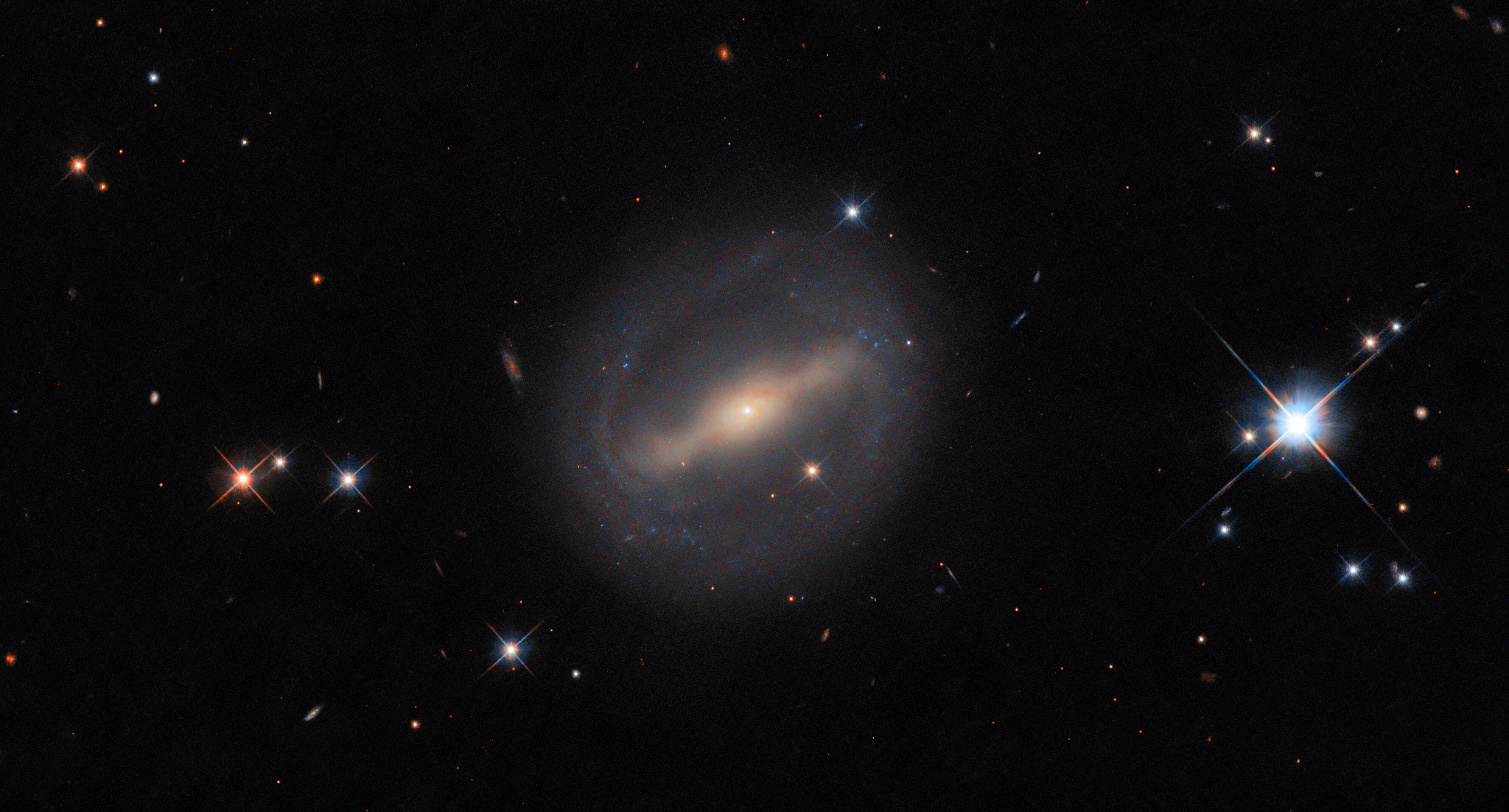
Hubble Rings in a New Galactic View

NASA’s Perseverance Rover to Begin Long Climb Up Martian Crater Rim
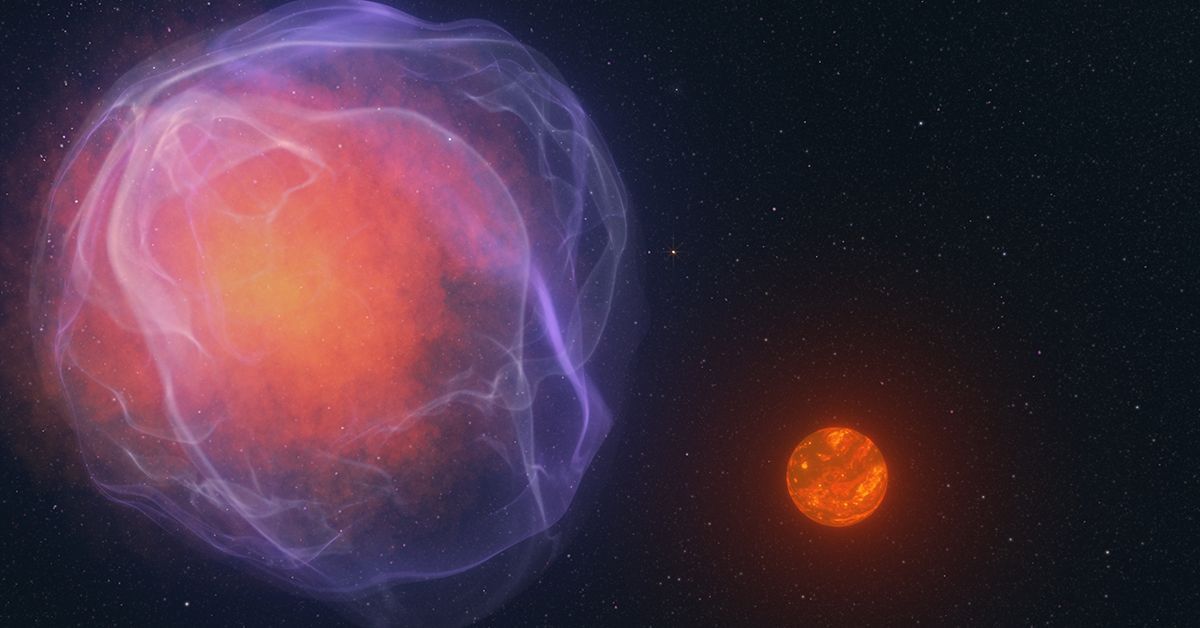
NASA Citizen Scientists Spot Object Moving 1 Million Miles Per Hour
- Search All NASA Missions
- A to Z List of Missions
- Upcoming Launches and Landings
- Spaceships and Rockets
- Communicating with Missions
- James Webb Space Telescope
- Hubble Space Telescope
- Why Go to Space
- Commercial Space
- Destinations
- Living in Space
- Explore Earth Science
- Earth, Our Planet
- Earth Science in Action
- Earth Multimedia
- Earth Science Researchers
- Pluto & Dwarf Planets
- Asteroids, Comets & Meteors
- The Kuiper Belt
- The Oort Cloud
- Skywatching
- The Search for Life in the Universe
- Black Holes
- The Big Bang
- Dark Energy & Dark Matter
- Earth Science
- Planetary Science
- Astrophysics & Space Science
- The Sun & Heliophysics
- Biological & Physical Sciences
- Lunar Science
- Citizen Science
- Astromaterials
- Aeronautics Research
- Human Space Travel Research
- Science in the Air
- NASA Aircraft
- Flight Innovation
- Supersonic Flight
- Air Traffic Solutions
- Green Aviation Tech
- Drones & You
- Technology Transfer & Spinoffs
- Space Travel Technology
- Technology Living in Space
- Manufacturing and Materials
- Science Instruments
- For Kids and Students
- For Educators
- For Colleges and Universities
- For Professionals
- Science for Everyone
- Requests for Exhibits, Artifacts, or Speakers
- STEM Engagement at NASA
- NASA's Impacts
- Centers and Facilities
- Directorates
- Organizations
- People of NASA
- Internships
- Our History
- Doing Business with NASA
- Get Involved

NASA en Español
- Aeronáutica
- Ciencias Terrestres
- Sistema Solar
- All NASA News
- Video Series on NASA+
- Newsletters
- Social Media
- Media Resources
- Upcoming Launches & Landings
- Virtual Events
- Sounds and Ringtones
- Interactives
- STEM Multimedia
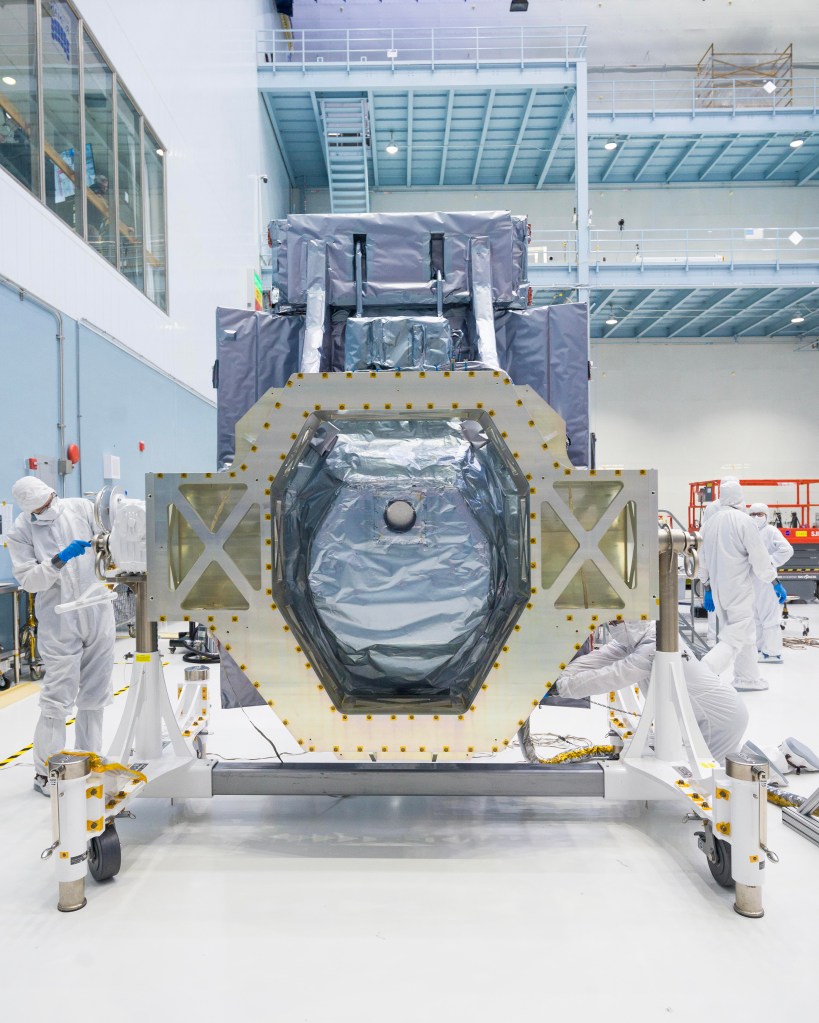
Primary Instrument for Roman Space Telescope Arrives at NASA Goddard
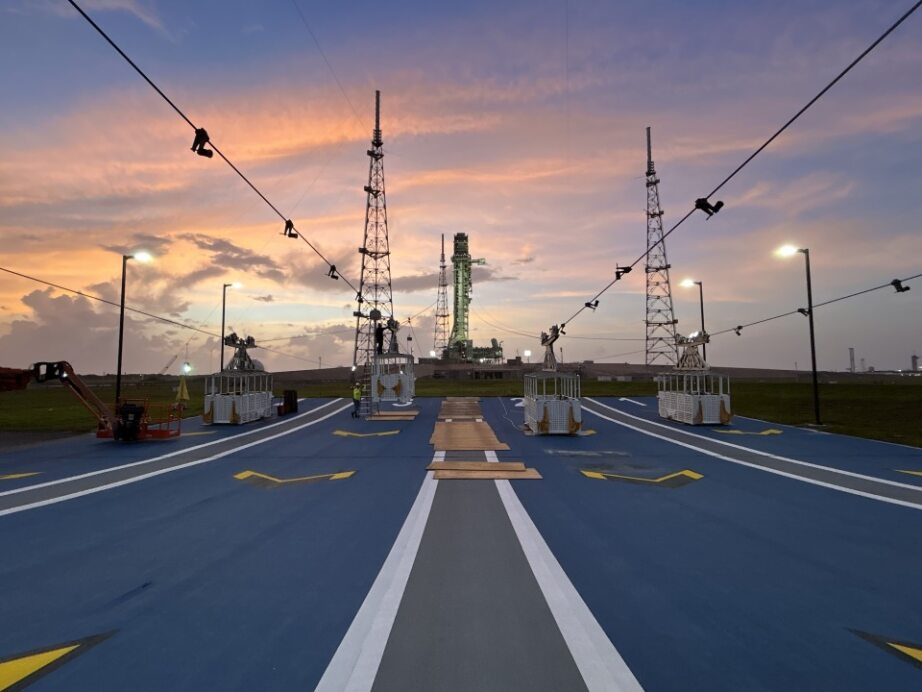
Artemis Emergency Egress System Emphasizes Crew Safety
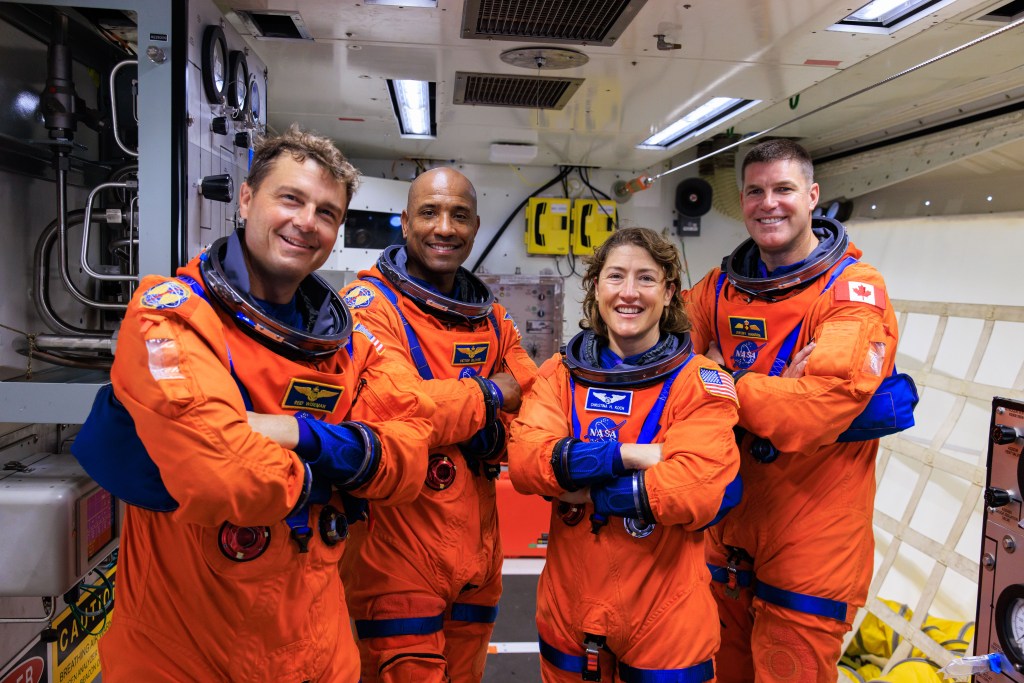
What’s New With the Artemis II Crew
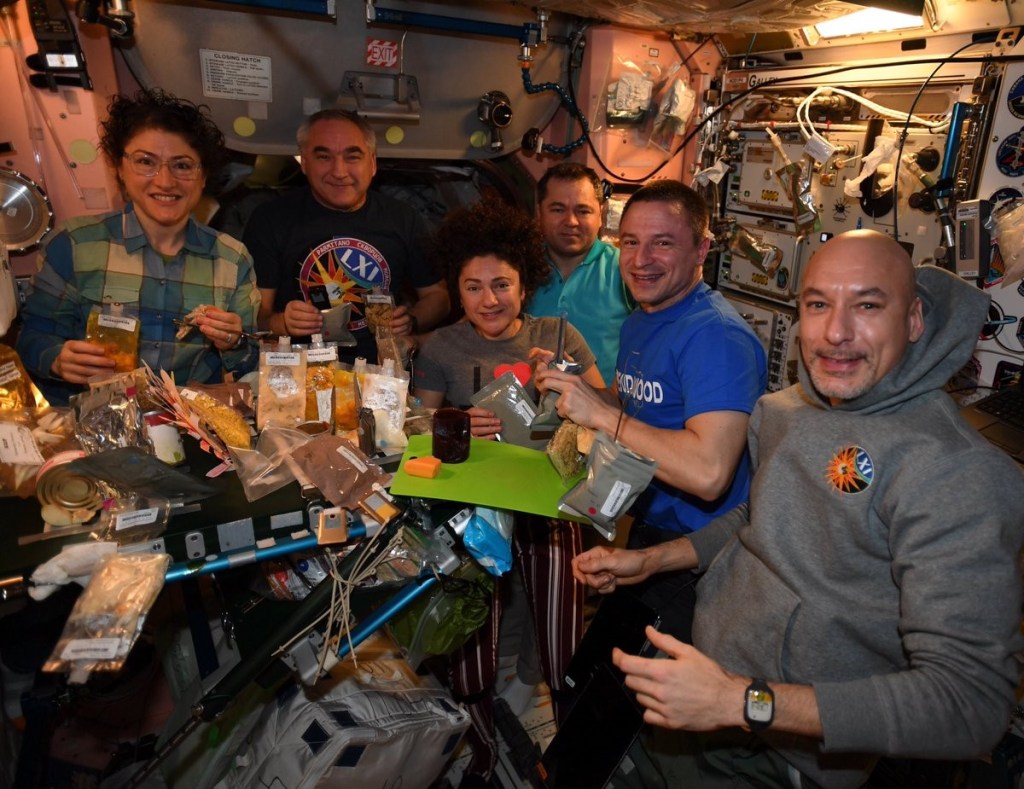
Food in Space
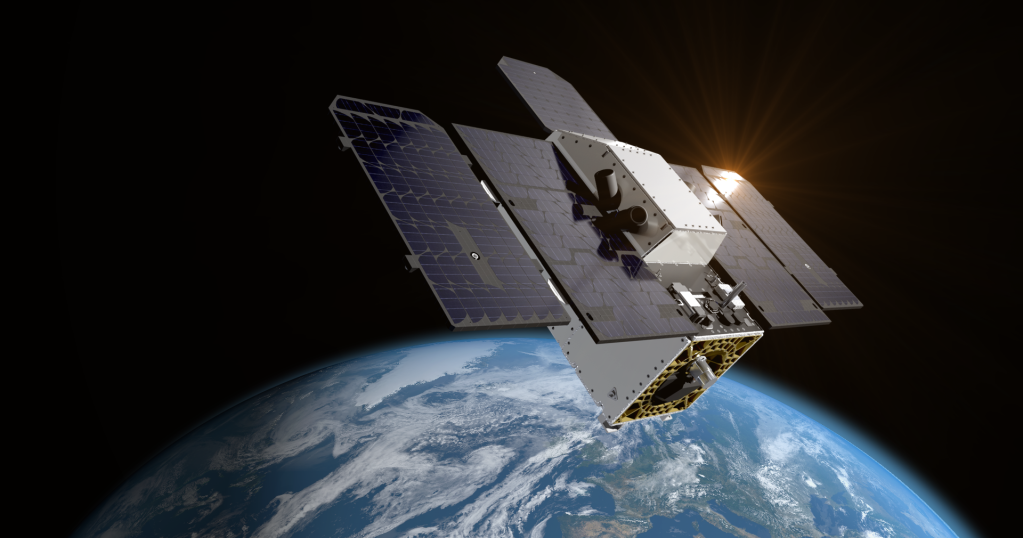
NASA-Designed Greenhouse Gas-Detection Instrument Launches
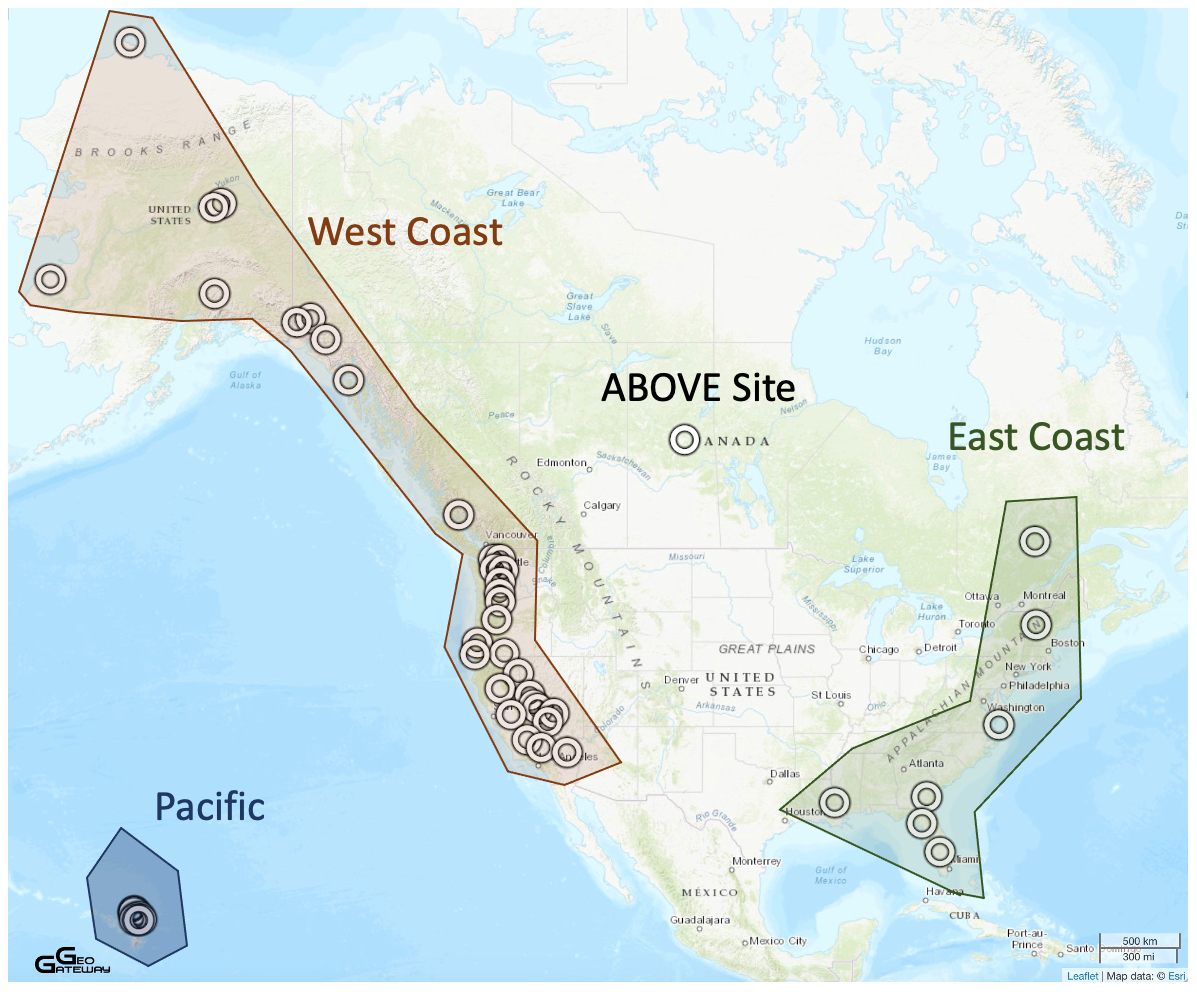
Airborne Surface, Cryosphere, Ecosystem, and Nearshore Topography

Amendment 42: A.30 Understanding Changes in High Mountain Asia Deferred to ROSES-25
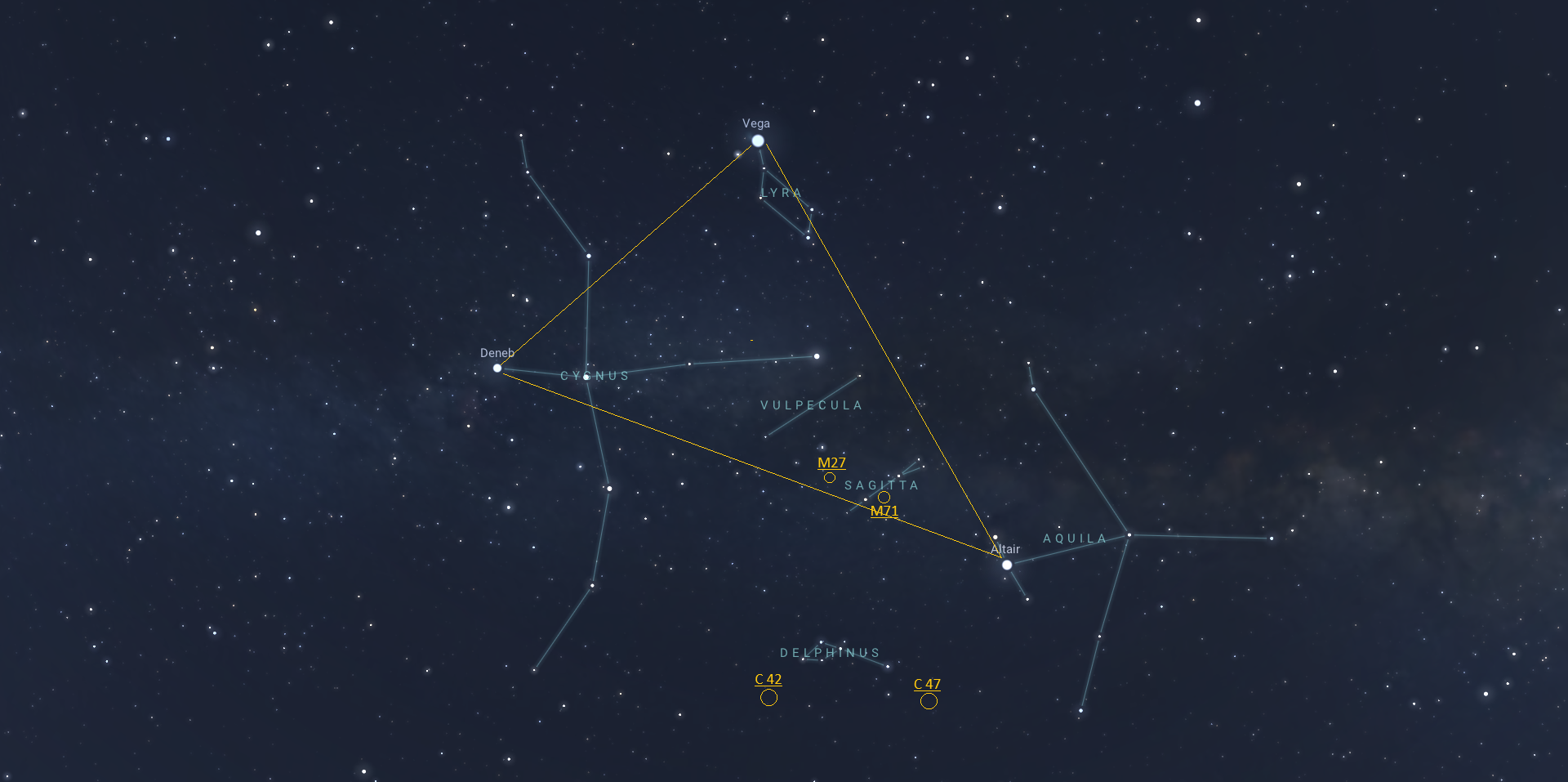
The Summer Triangle’s Hidden Treasures

Solar Eclipse Data Story Helps the Public Visualize the April 2024 Total Eclipse
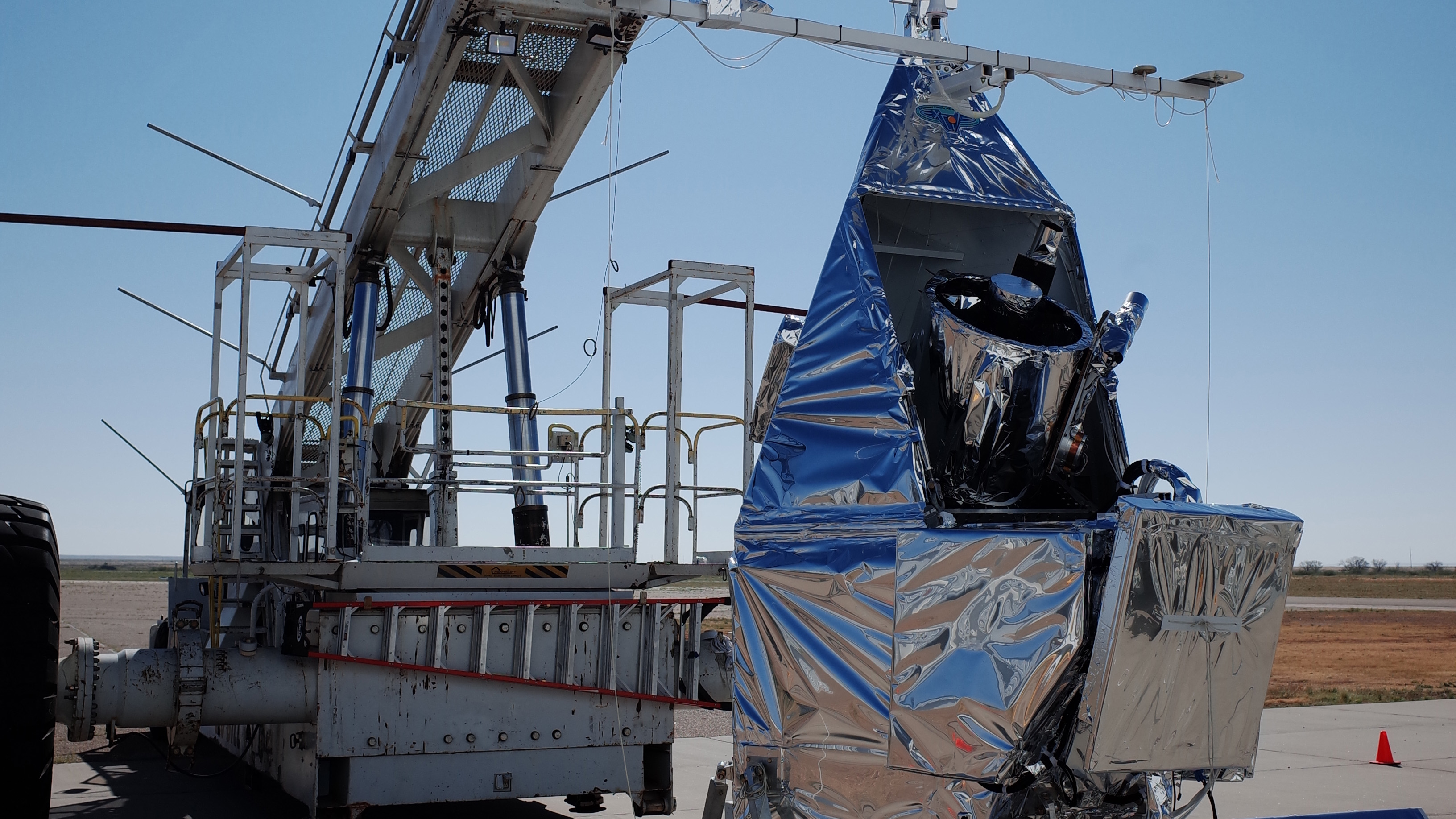
EXCITE (EXoplanet Climate Infrared TElescope)

NASA Selects 5 New Roman Technology Fellows in Astrophysics
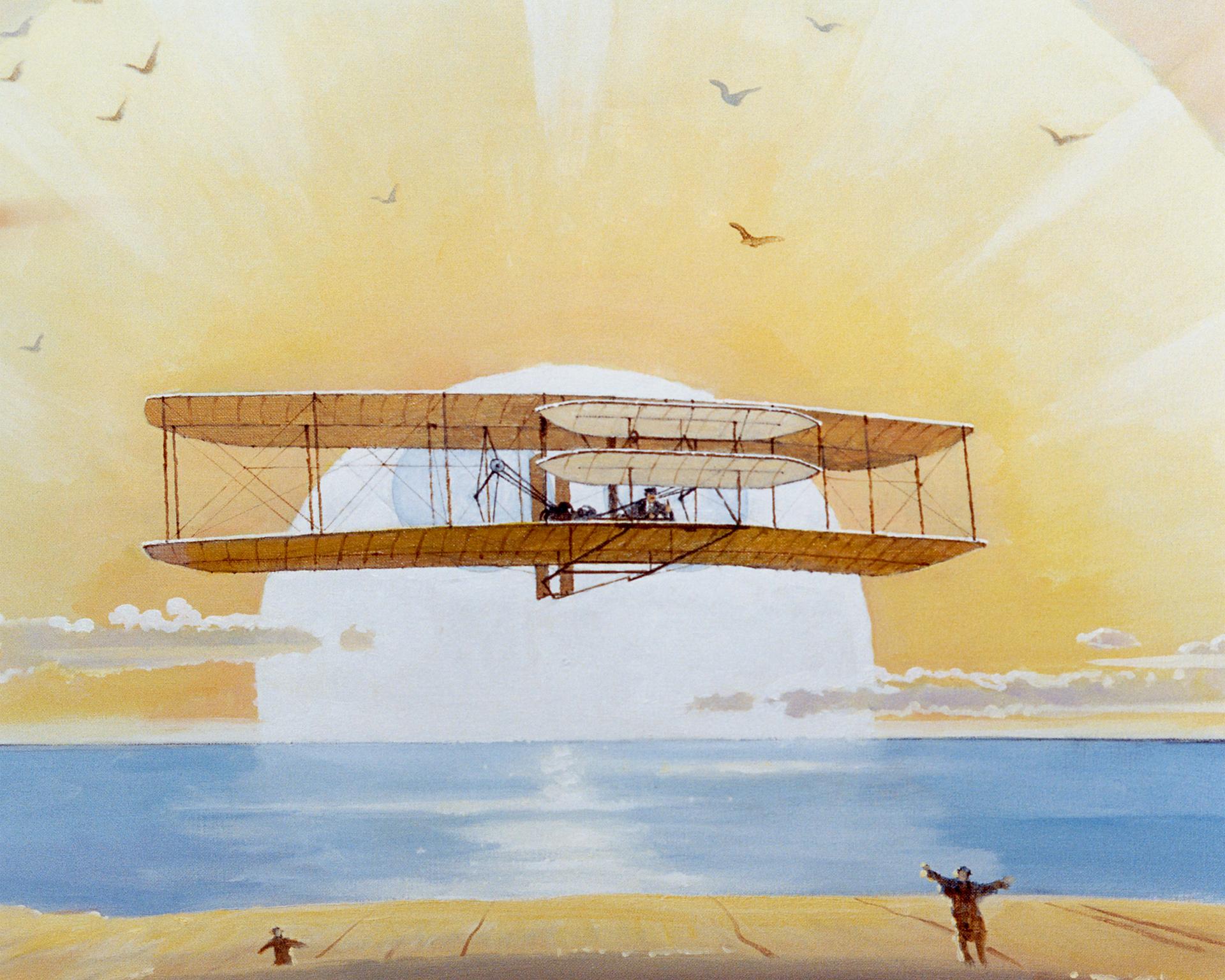
Orville Wright and National Aviation Day
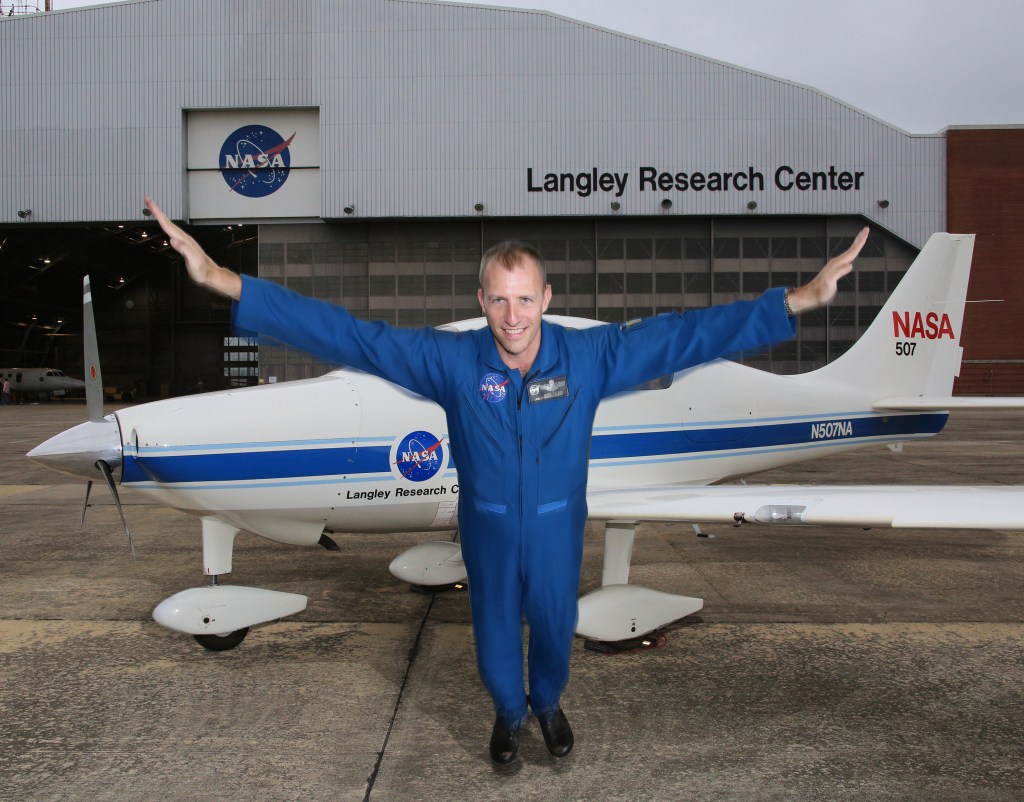
Ideas for Celebrating National Aviation Day

National Aviation Day 2024 Celebrates Faces of Flight
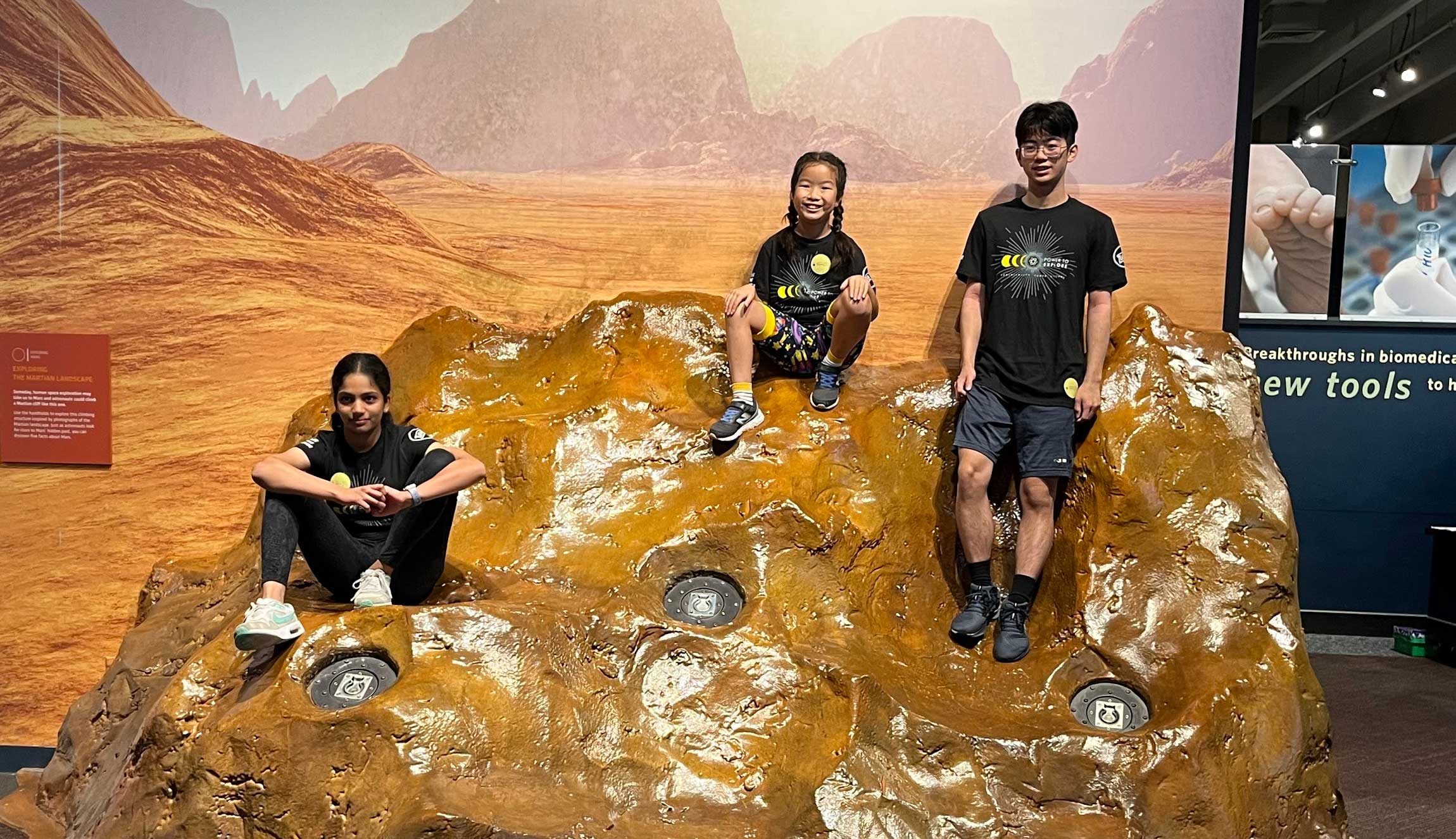
Perseverance Pays Off for Student Challenge Winners
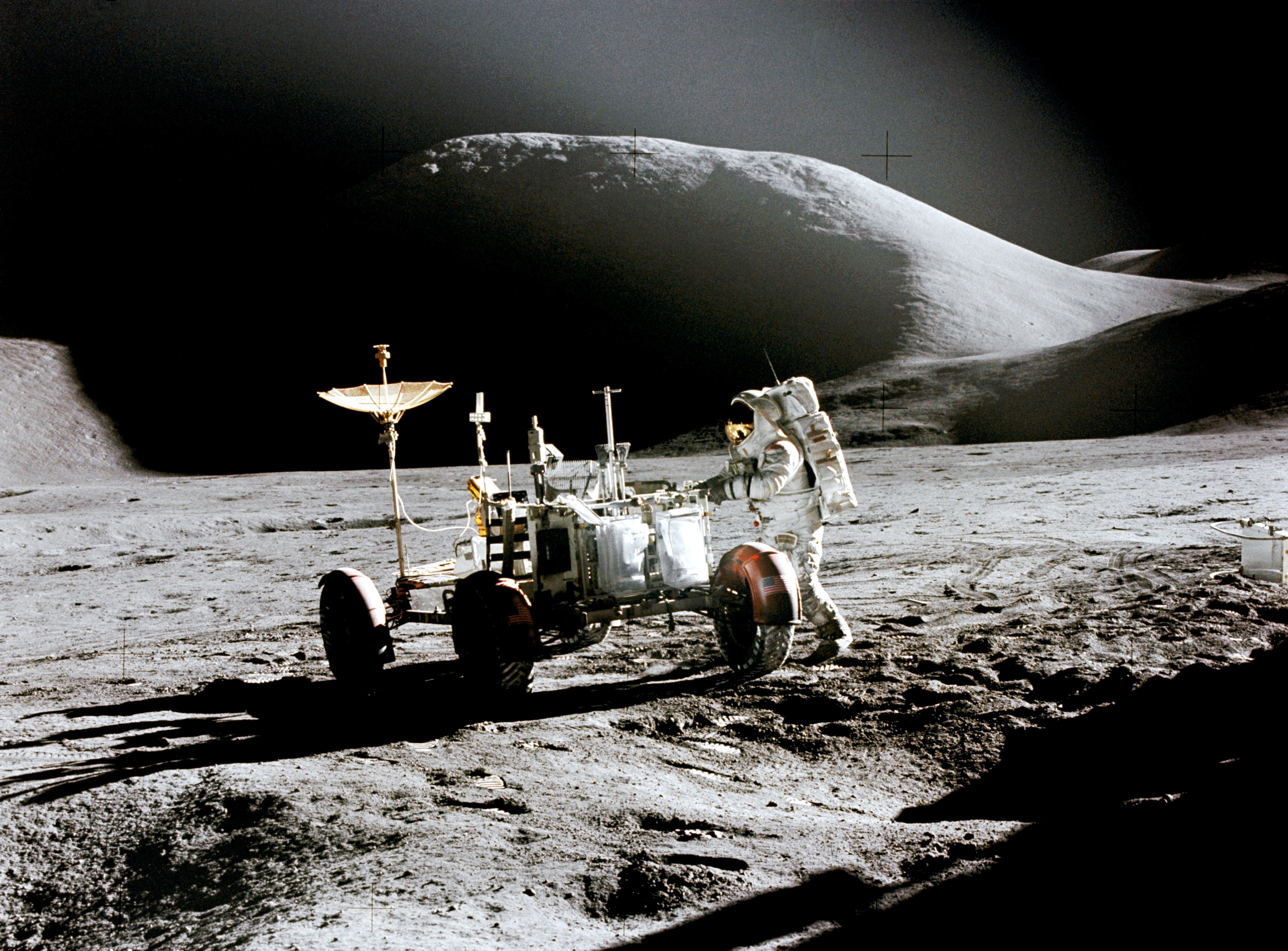
Amendment 41: DRAFT F.13 Lunar Terrain Vehicle Instruments Program Released for Community Comment.
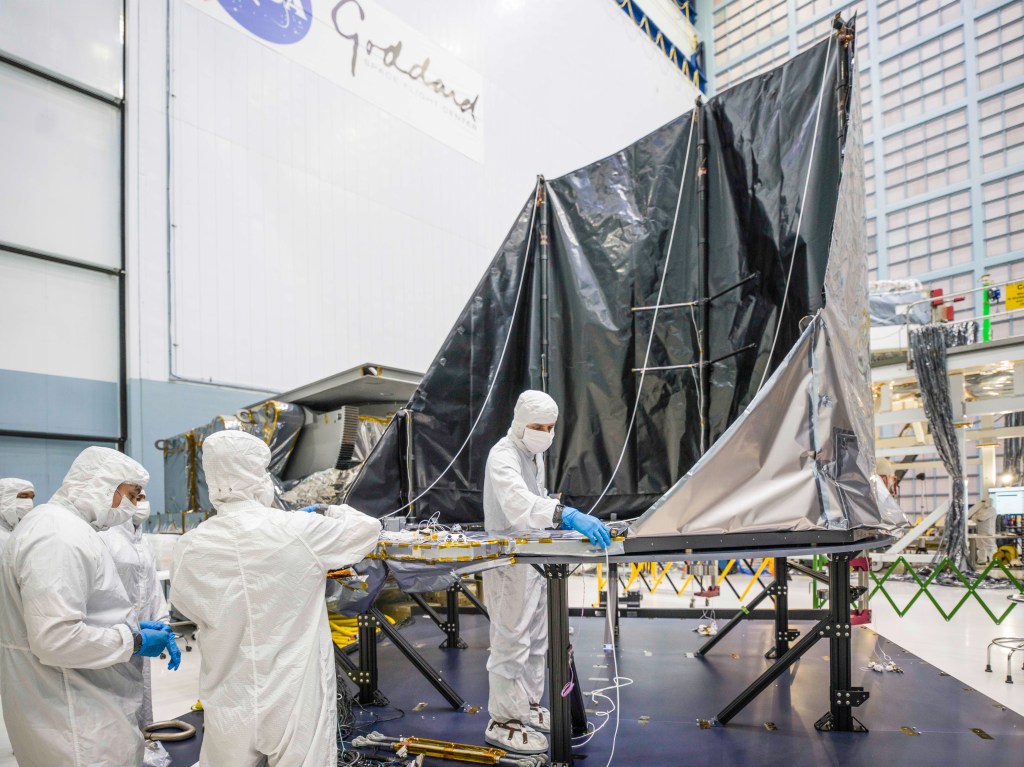
NASA Tests Deployment of Roman Space Telescope’s ‘Visor’

How Do I Navigate NASA Learning Resources and Opportunities?

NASA Demonstrates ‘Ultra-Cool’ Quantum Sensor for First Time in Space

55 Years Ago: NASA Group 7 Astronaut Selection
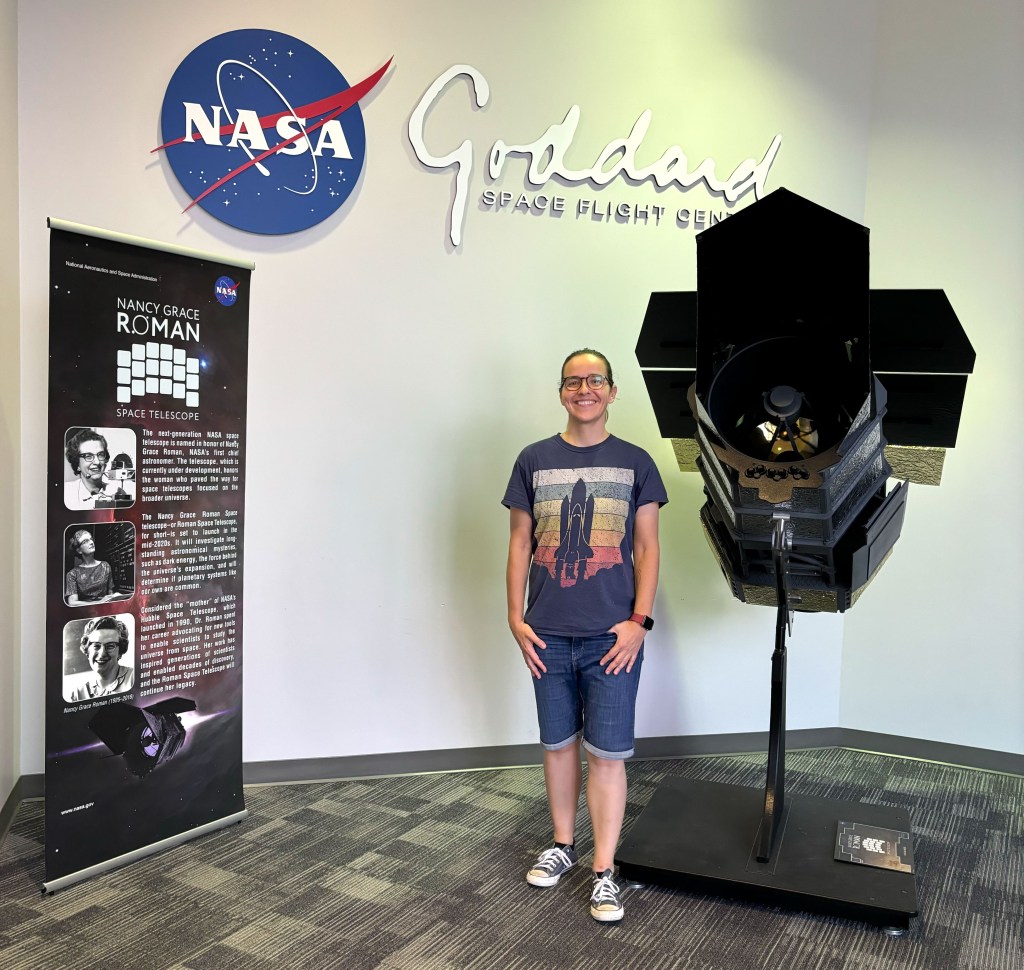
There Are No Imaginary Boundaries for Dr. Ariadna Farrés-Basiana

Astronauta de la NASA Frank Rubio

Diez maneras en que los estudiantes pueden prepararse para ser astronautas
30 years ago: voyager 2’s historic neptune flyby.
Anthony Greicius
Getting there, being there.
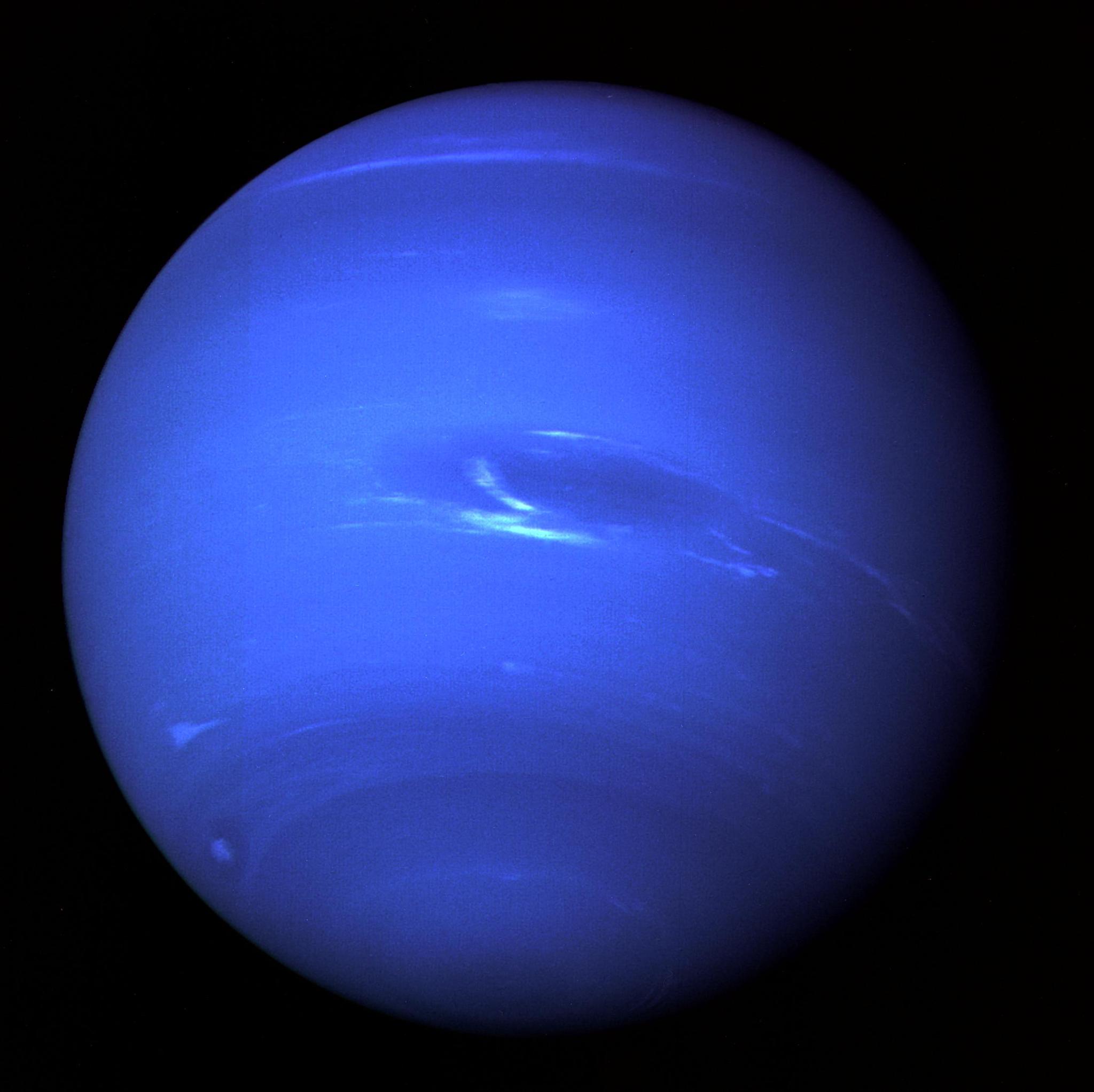
Thirty years ago, on Aug. 25, 1989, NASA’s Voyager 2 spacecraft made a close flyby of Neptune, giving humanity its first close-up of our solar system’s eighth planet. Marking the end of the Voyager mission’s Grand Tour of the solar system’s four giant planets — Jupiter, Saturn, Uranus and Neptune — that first was also a last: No other spacecraft has visited Neptune since.
“The Voyager planetary program really was an opportunity to show the public what science is all about,” said Ed Stone, a professor of physics at Caltech and Voyager’s project scientist since 1975. “Every day we learned something new.”
Wrapped in teal- and cobalt-colored bands of clouds, the planet that Voyager 2 revealed looked like a blue-hued sibling to Jupiter and Saturn, the blue indicating the presence of methane. A massive, slate-colored storm was dubbed the “Great Dark Spot,” similar to Jupiter’s Great Red Spot. Six new moons and four rings were discovered.
During the encounter, the engineering team carefully changed the probe’s direction and speed so that it could do a close flyby of the planet’s largest moon, Triton. The flyby showed evidence of geologically young surfaces and active geysers spewing material skyward. This indicated that Triton was not simply a solid ball of ice, even though it had the lowest surface temperature of any natural body observed by Voyager: minus 391 degrees Fahrenheit (minus 235 degrees Celsius).
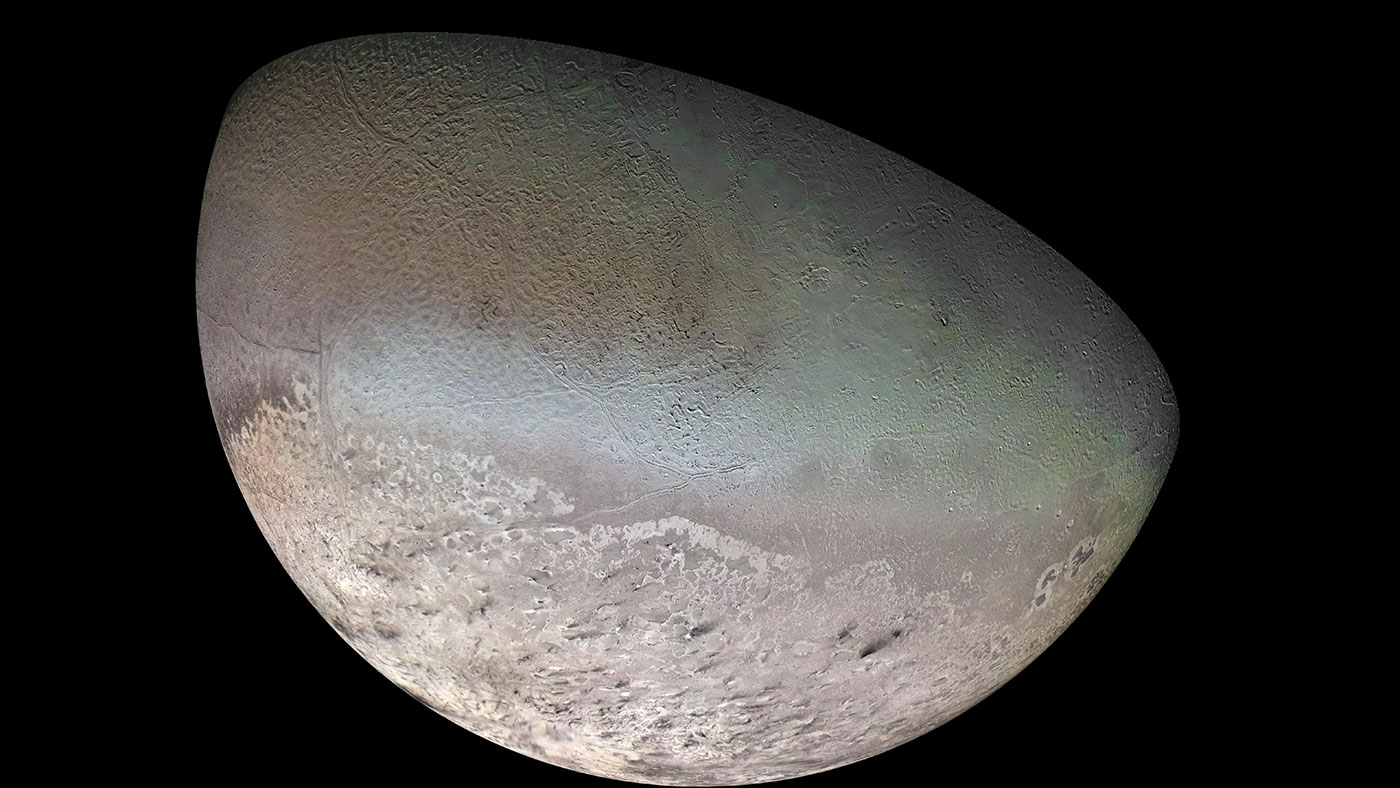
The conclusion of the Neptune flyby marked the beginning of the Voyager Interstellar Mission, which continues today, 42 years after launch. Voyager 2 and its twin, Voyager 1 (which had also flown by Jupiter and Saturn), continue to send back dispatches from the outer reaches of our solar system. At the time of the Neptune encounter, Voyager 2 was about 2.9 billion miles (4.7 billion kilometers) from Earth; today it is 11 billion miles (18 billion kilometers) from us. The faster-moving Voyager 1 is 13 billion miles (21 billion kilometers) from Earth.
By the time Voyager 2 reached Neptune, the Voyager mission team had completed five planetary encounters. But the big blue planet still posed unique challenges.
About 30 times farther from the Sun than Earth is, the icy giant receives only about 0.001 times the amount of sunlight that Earth does. In such low light, Voyager 2’s camera required longer exposures to get quality images. But because the spacecraft would reach a maximum speed of about 60,000 mph (90,000 kph) relative to Earth, a long exposure time would make the image blurry. (Imagine trying to take a picture of a roadside sign from the window of a speeding car.)
So the team programmed Voyager 2’s thrusters to fire gently during the close approach, rotating the spacecraft to keep the camera focused on its target without interrupting the spacecraft’s overall speed and direction.
The probe’s great distance also meant that by the time radio signals from Voyager 2 reached Earth, they were weaker than those of other flybys. But the spacecraft had the advantage of time: The Voyagers communicate with Earth via the Deep Space Network, or DSN, which utilizes radio antennas at sites in Madrid, Spain; Canberra, Australia; and Goldstone, California. During Voyager 2’s Uranus encounter in 1986, the three largest DSN antennas were 64-meters (210 feet) wide. To assist with the Neptune encounter, the DSN expanded the dishes to 70 meters (230 feet). They also included nearby non-DSN antennas to collect data, including another 64-meter (210 feet) dish in Parkes, Australia, and multiple 25-meter (82 feet) antennas at the Very Large Array in New Mexico.
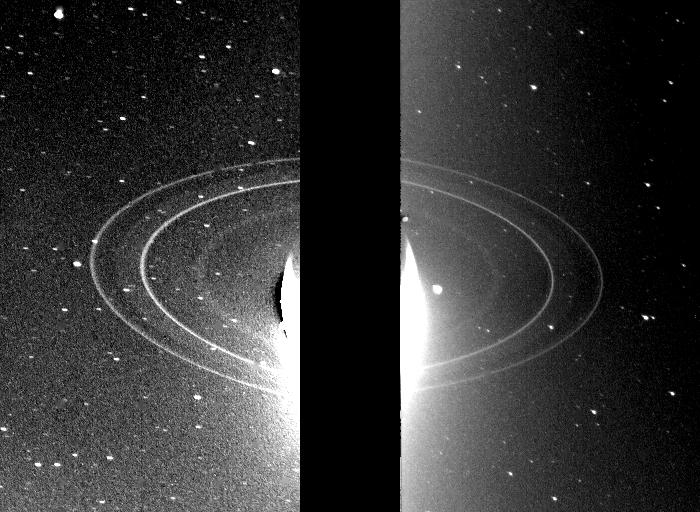
The effort ensured that engineers could hear Voyager loud and clear. It also increased how much data could be sent back to Earth in a given period, enabling the spacecraft to send back more pictures from the flyby.
In the week leading up to that August 1989 close encounter, the atmosphere was electric at NASA’s Jet Propulsion Laboratory in Pasadena, California, which manages the Voyager mission. As images taken by Voyager 2 during its Neptune approach made the four-hour journey to Earth, Voyager team members would crowd around computer monitors around the Lab to see.
“One of the things that made the Voyager planetary encounters different from missions today is that there was no internet that would have allowed the whole team and the whole world to see the pictures at the same time,” Stone said. “The images were available in real time at a limited number of locations.”
But the team was committed to giving the public updates as quickly as possible, so from Aug. 21 to Aug. 29, they would share their discoveries with the world during daily press conferences. On Aug. 24, a program called “Voyager All Night” broadcast regular updates from the probe’s closest encounter with the planet, which took place at 4 a.m. GMT (9 p.m. in California on Aug. 24).
The next morning, Vice President Dan Quayle visited the Lab to commend the Voyager team. That night, Chuck Berry, whose song “Johnny B. Goode” was included on the Golden Record that flew with both Voyagers, played at JPL’s celebration of the feat.
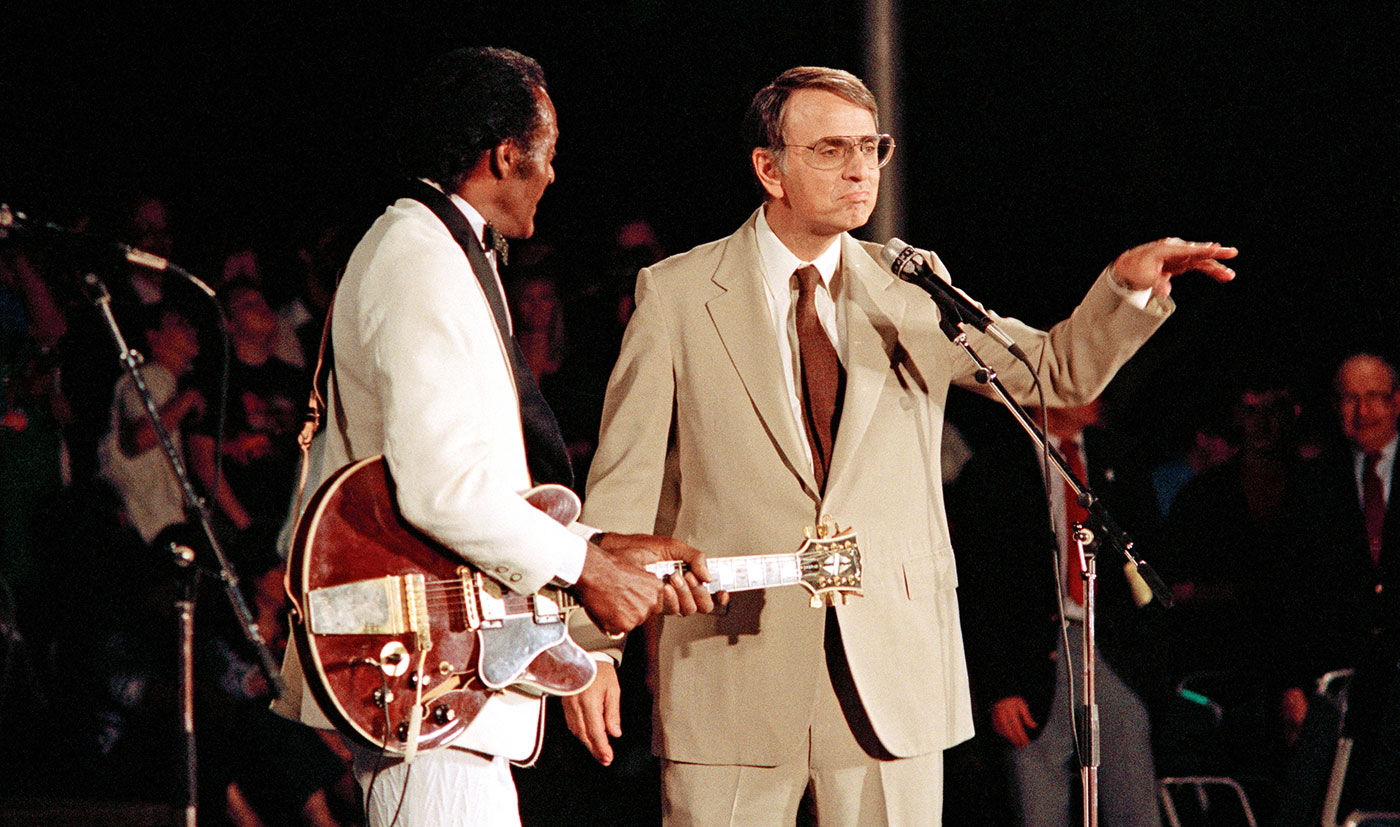
Of course, the Voyagers’ achievements extend far beyond that historic week three decades ago. Both probes have now entered interstellar space after exiting the heliosphere — the protective bubble around the planets created by a high-speed flow of particles and magnetic fields spewed outward by our Sun.
They are reporting back to Earth on the “weather” and conditions from this region filled with the debris from stars that exploded elsewhere in our galaxy. They have taken humanity’s first tenuous step into the cosmic ocean where no other operating probes have flown.
Voyager data also complement other missions, including NASA’s Interstellar Boundary Explorer ( IBEX ), which is remotely sensing that boundary where particles from our Sun collide with material from the rest of the galaxy. And NASA is preparing the Interstellar Mapping and Acceleration Probe ( IMAP ), due to launch in 2024, to capitalize on Voyager observations.
The Voyagers send their findings back to DSN antennas with 13-watt transmitters — about enough power to run a refrigerator light bulb.
“Every day they travel somewhere that human probes have never been before,” said Stone. “Forty-two years after launch, and they’re still exploring.”
For more information about the Voyager mission visit:
https://voyager.jpl.nasa.gov/
For more images of Neptune taken by Voyager 2 visit:
https://voyager.jpl.nasa.gov/galleries/images-voyager-took/neptune/
Calla Cofield Jet Propulsion Laboratory, Pasadena, Calif. 626-808-2469 [email protected]
NASA Voyager 2 spacecraft extends its interstellar science mission for 3 more years
A technical trick will keep the 46-year-old mission collecting science for a little longer.
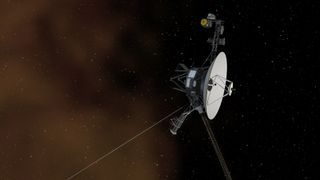
Voyager 2 can keep sending science back from interstellar space a little longer.
NASA's long-running Voyager 2 mission will postpone an instrument shutdown three years to 2026 thanks to a technical feat by engineers. The change will allow the mission, which launched in 1977, to gather valuable science in deep space.
"We are definitely interested in keeping as many science instruments operating as long as possible," Linda Spilker, Voyager's project scientist at NASA's Jet Propulsion Laboratory in southern California, said of the decision in a statement Wednesday (April 26.)
Voyager 2 and its twin, Voyager 1 , will thus continue to gather valuable data deeper in space than any probes have before them. Ongoing investigations, NASA says , include examining the sun's magnetic field, the energy of the solar wind emanating from our sun and radio emissions in interstellar space.
Related: After 45 years, the 5-billion-year legacy of the Voyager 2 interstellar probe is just beginning
The Voyagers are both powered by nuclear energy, as the sun's rays are too weak for solar power so far out in deep space. The radioisotope thermoelectric generators (RTG) they use decay over time, meaning the plutonium produces a little less power every year.
Engineers have already shut down heaters, alongside other non-essential systems, to prioritize science for the robust spacecraft. But power is now so low that tough decisions had to come this year for Voyager 2's five science instruments. (Voyager 1 has only four running, due to a glitch with one instrument early in its lifespan, so it has enough power for all of them until 2024.)
Get the Space.com Newsletter
Breaking space news, the latest updates on rocket launches, skywatching events and more!
Solving Voyager 2's power problems came down to removing a protection normally available to stop electricity surges from damaging the spacecraft's instruments. That protection is called a voltage regulator. This regulator triggers a backup circuit that takes an extra bit of power from the RTG as surge protection in case of problems.
"Instead of reserving that power, the mission will now be using it to keep the science instruments operating," NASA officials wrote in the statement. This decision will loosen voltage regulation on the spacecraft, but both the Voyagers have experienced "relatively stable" levels of power, "minimizing the need for a safety net."
Related: Voyager turns 45: What the iconic mission taught us and what's next
— Voyager engineers keep on tickin' in new documentary 'It's Quieter in the Twilight'
— Scientists' predictions for the long-term future of the Voyager Golden Records will blow your mind
— Voyager: 15 incredible images of our solar system captured by the twin probes (gallery)
Engineers will monitor the success of this strategy on Voyager 2. If everything works, Voyager 1 will use the same technique as it begins to run short on power next year, NASA officials said. Everything has been working well on Voyager 2 for a few weeks with the new procedure, they noted.
"Variable voltages pose a risk to the instruments, but we've determined that it's a small risk, and the alternative offers a big reward of being able to keep the science instruments turned on longer," Suzanne Dodd, Voyager's project manager at JPL, said in the same statement.
Both Voyagers were only expected to last four years in space and to collect solar system science at Jupiter and Saturn. A mission extension in 1981 allowed Voyager 2 to eventually fly past Uranus and Neptune, making it the only spacecraft yet to do so. Voyager 1 was high above the plane of the solar system after Saturn's flyby, but the spacecraft gathered valuable solar data from its trajectory because of the extension.
Another mission extension in 1990 aimed to bring the Voyagers to interstellar space . Voyager 1 crossed into that region in 2012, while the slower-moving Voyager 2 achieved the milestone in 2018.
Elizabeth Howell is the co-author of " Why Am I Taller ?" (ECW Press, 2022; with Canadian astronaut Dave Williams), a book about space medicine. Follow her on Twitter @howellspace . Follow us on Twitter @Spacedotcom or Facebook .
Join our Space Forums to keep talking space on the latest missions, night sky and more! And if you have a news tip, correction or comment, let us know at: [email protected].
Elizabeth Howell (she/her), Ph.D., is a staff writer in the spaceflight channel since 2022 covering diversity, education and gaming as well. She was contributing writer for Space.com for 10 years before joining full-time. Elizabeth's reporting includes multiple exclusives with the White House and Office of the Vice-President of the United States, an exclusive conversation with aspiring space tourist (and NSYNC bassist) Lance Bass, speaking several times with the International Space Station, witnessing five human spaceflight launches on two continents, flying parabolic, working inside a spacesuit, and participating in a simulated Mars mission. Her latest book, " Why Am I Taller ?", is co-written with astronaut Dave Williams. Elizabeth holds a Ph.D. and M.Sc. in Space Studies from the University of North Dakota, a Bachelor of Journalism from Canada's Carleton University and a Bachelor of History from Canada's Athabasca University. Elizabeth is also a post-secondary instructor in communications and science at several institutions since 2015; her experience includes developing and teaching an astronomy course at Canada's Algonquin College (with Indigenous content as well) to more than 1,000 students since 2020. Elizabeth first got interested in space after watching the movie Apollo 13 in 1996, and still wants to be an astronaut someday. Mastodon: https://qoto.org/@howellspace
Para-astronaut John McFall hopes to see an ISS astronaut with a disability fly by 2030 (exclusive, video)
Robotic Russian Progress 89 cargo ship docks at ISS with tons of fresh supplies (video)
Nikon Trailblazer 8x25 ATB compact binoculars review
Most Popular
- 2 'Star Trek: Discovery' final season lands on DVD, Blu-ray and limited edition Steelbook
- 3 Dinosaur-killing asteroid was a rare rock from beyond Jupiter, new study reveals
- 4 Para-astronaut John McFall hopes to see an ISS astronaut with a disability fly by 2030 (exclusive, video)
- 5 Google Pixel 8a review

Dailymotion
Watch How NASA Sends Communicates With Voyager 2
Posted: August 17, 2024 | Last updated: August 17, 2024
Credit: Space.com / animations: NASA/JPL-Caltech/Goddard / produced & edited by Steve Spaleta
More for You
Kamala Harris Suffers Triple Polling Blow Before DNC Starts
Mystery of Stonehenge deepens after ‘jaw-dropping’ discovery
I Asked 5 Egg Farmers the Best Way To Hard-Boil Eggs—They All Said the Same Thing
A cardiologist explains 1 thing you can do to test your heart health — and simple exercises to improve it
I'm 67 and want to buy my dream retirement home in Florida but I don't have enough money to buy in cash — can I still get a mortgage as a retiree?
Thunderbolts leak solves a long-standing Avengers mystery
The curious North American islands which still belong to France
3 Ways To Clean Dirty Baking Sheets So They Look Brand New
The 'origins of Atlantis' discovered off the coast of Lanzarote
9 Unnecessary Bills You Should Stop Paying in 2024
For Better Beef Stew, Reach For This Juice
Caitlin Clark delivered an awesome reflection on the importance of signing autographs for fans
11 Upgrades That Actually Make Your House Harder To Sell, According to Real Estate Experts
Hollywood movie marred by controversy makes $100,000,000 in first week
9 Places To Retire That Are Just Like Colorado But Way Cheaper
It’s not 8 glasses a day anymore. Here’s how much water you should drink each day
A Fingerprint Taken From Stonehenge Changes Everything We Know About Its Mystical Origins
New airline rules are set to take effect this fall
Scientists stumped as rare deep sea ‘doomsday serpent’ found in California
I Just Learned How Much Water Italians Use To Cook Pasta, And I Have Been Doing It Wrong
Who is the ‘Golden Voyager' at the Olympics Closing Ceremony?
By nbc chicago staff • published august 11, 2024 • updated on august 11, 2024 at 3:29 pm.
As the 2024 Summer Olympics conclude, viewers are turning their attention to the Closing Ceremony in Paris, with one performer capturing widespread attention and sparking questions.
The "Golden Voyager," performing in the middle stages of Sunday's Closing Ceremony, was introduced in the Stade de France, in an imagining of a time without the Olympics.
📺 24/7 Chicago news stream: Watch NBC 5 free wherever you are
While it's unknown who is playing the role of the Golden Voyager in the ceremony, the character has quite the history.
The character was inspired by a number of references from France's historical heritage, starting with the Spirit of the Bastille, according to the creators. It also references "The Génie de la Liberté," also called the Génie de la Bastille, is a bronze gilded statue cast in 1836 by Auguste Dumont. This allegorical statue represents Liberty and surmounts the July Column, located in the center of the Place de la Bastille in Paris.
It was meant to evoke creatures from science fiction and video games.
According to the artistic directors, another inspiration was The Voyager Golden Record, launched into space in 1977 by the Voyager spacecraft, inspired both the title of the Ceremony and the name of the character. This golden record, which serves as a time capsule in interstellar space and is embedded with greetings from human civilization, was made in France.
The mysterious performance runs parallel to a similar showing in the Games' Opening Ceremony, when a masked torch-bearer that contained references to the popular video game series "Assassin's Creed."
Feeling out of the loop? We'll catch you up on the Chicago news you need to know. Sign up for the weekly Chicago Catch-Up newsletter .
This article tagged under:

Selecting, Implementing, and Evaluating Reading Interventions

- Reading Intervention
Reading intervention is an essential component of schoolwide literacy improvement frameworks such as Multi-Tiered Systems of Support (MTSS). Due to the challenging and high-stakes nature of providing reading intervention, it is understandable educators are sometimes looking for intervention to provide a quick fix. Although there are several effective reading intervention programs available, simply purchasing new programs is not likely to be sufficient. The effectiveness of reading intervention programs can be increased when attention is paid to how programs are selected, implemented, and evaluated. Let's dive into each of these factors.
Where to Begin?
Building an effective system of intervention starts with program selection. School leaders who are responsible for purchasing intervention programs need deep knowledge of the research about effective reading intervention. This involves knowing what to look for in program design and delivery. Additionally, just because a program is designed based on research, or even has research about its effectiveness, doesn't mean it will necessarily work with the students in front of you. Intervention selection decisions should be based on assessment data that specifies the needs of at-risk and struggling readers. Even students with identified reading disabilities do not all need the same reading intervention. Programs should be selected to target the specific needs of students. And finally, intervention selection should depend on the capacity of the school to implement the program. If sufficient time isn't available for planning and delivering the intervention, or funding isn't available for professional learning and coaching, even the most research-aligned interventions may fail.
Next, Implementation
Implementing an effective system of intervention depends on a careful match between the requirements of the program and elements of the school system such as teaming, alignment across tiers, and flexible service delivery. Ideally, grade-level and building-level teams use student assessment data to plan intervention implementation based on factors such as the schedule, availability of materials, staff knowledge, and alignment across tiers of support. Students have the best probability of making catch-up growth when their intervention instruction is aligned to their classroom instruction. In many cases, this may mean de-implementing ineffective instructional approaches and programs.
The Right Assessment is Key
Selecting and implementing the right reading intervention programs is just the beginning. Direct, curriculum-based assessments (such as Acadience ® Reading ) are needed to evaluate the effectiveness of interventions. These brief indicators are used to repeatedly measure student growth, allowing interventionists to make real-time decisions about maintaining, fading, or intensifying intervention. For some students, especially students with reading disabilities such as dyslexia, the process of evaluating and refining the intervention will be ongoing across time.
Dr. Stephanie Stollar is founder of Stephanie Stollar Consulting LLC and the creator of The Reading Science Academy . Dr. Stollar is a part-time assistant professor in the online reading science program at Mount St. Joseph University, and a founding member of a national alliance for supporting reading science in higher education . As a board member for the Innovations in Education Consortium, she collaboratively plans the annual MTSS Innovations in Education Conference . Dr. Stollar has worked as a school psychologist, an educational consultant, and as vice president for professional learning for Acadience ® Learning Inc. She has provided professional development, conducted research and published in the areas of assessment, early intervention, and collaborative problem-solving. She is passionate about aligning practice to research and designing school systems to prevent reading failure.
Never Miss an Episode
Add your email here to sign up for EDVIEW 360 blogs, webinars, and podcasts. We'll send you an email when new posts and episodes are published.
- Dr. Louisa Moats
- Dr. John Woodward
- Dr. Stephanie Stollar
- Dr. Ruth Kaminski
- Dr. Courtney Wheeler
- Hannah Irion-Frake

- Electronics
- Computers & Accessories
- Computer Accessories & Peripherals
- Audio & Video Accessories
- Computer Headsets
Add to your order

- No Additional Cost: You pay nothing for repairs – parts, labor, and shipping included.
- Coverage: Plan starts on the date of purchase. Drops, spills and cracked screens due to normal use are covered from day one. Malfunctions are covered after the manufacturer's warranty. Real experts are available 24/7 to help with set-up, connectivity issues, troubleshooting and much more.
- Easy Claims Process: File a claim anytime online or by phone. Most claims approved within minutes. If we can’t repair it, we’ll send you an Amazon e-gift card for the purchase price of your covered product or replace it.
- Product Eligibility: Plan must be purchased with a product or within 30 days of the product purchase. Pre-existing conditions are not covered.
- Terms & Details: More information about this protection plan is available within the “Product guides and documents” section. Simply click “User Guide” for more info. Terms & Conditions will be available in Your Orders on Amazon. Asurion will also email your plan confirmation with Terms & Conditions to the address associated with your Amazon account within 24 hours of purchase.
- Buy a lot of stuff on Amazon? Tons of items eligible for coverage, from the latest tech like laptops, game consoles, TVs, phones, and cameras to major appliances, sporting goods, tools, toys, personal care, furniture, and more.
- Fast, easy claims. Frustration-free claims, with most filed in minutes. We will fix it, replace it, or reimburse you with an Amazon e-gift card for the purchase price of your product (excluding tax).
- No hidden fees. *THIS PROGRAM IS MONTH-TO-MONTH AND WILL CONTINUE UNTIL CANCELED* Coverage for all products ends 30 days after the plan is canceled. Cancel at any time.

Enjoy fast, free delivery, exclusive deals, and award-winning movies & TV shows with Prime Try Prime and start saving today with fast, free delivery
Amazon Prime includes:
Fast, FREE Delivery is available to Prime members. To join, select "Try Amazon Prime and start saving today with Fast, FREE Delivery" below the Add to Cart button.
- Cardmembers earn 5% Back at Amazon.com with a Prime Credit Card.
- Unlimited Free Two-Day Delivery
- Streaming of thousands of movies and TV shows with limited ads on Prime Video.
- A Kindle book to borrow for free each month - with no due dates
- Listen to over 2 million songs and hundreds of playlists
- Unlimited photo storage with anywhere access
Important: Your credit card will NOT be charged when you start your free trial or if you cancel during the trial period. If you're happy with Amazon Prime, do nothing. At the end of the free trial, your membership will automatically upgrade to a monthly membership.
Buy new: #buybox .a-accordion .a-accordion-active .a-price[data-a-size=l].reinventPriceAccordionT2 .a-price-whole { font-size: 28px !important; } #buybox .a-accordion .a-accordion-active .a-price[data-a-size=l].reinventPriceAccordionT2 .a-price-fraction, #buybox .a-accordion .a-accordion-active .a-price[data-a-size=l].reinventPriceAccordionT2 .a-price-symbol { top: -0.75em; font-size: 13px; } $199.99 $ 199 . 99 FREE delivery Sunday, August 25 Ships from: Amazon.com Sold by: Amazon.com
Return this item for free.
We offer easy, convenient returns with at least one free return option: no shipping charges. All returns must comply with our returns policy.
- Go to your orders and start the return
- Select your preferred free shipping option
- Drop off and leave!
2 Year Headphones Protection Plan
3 year headphones protection plan, asurion complete protect: one plan covers all eligible past and future purchases on amazon, save with used - good #buybox .a-accordion .a-accordion-active .a-price[data-a-size=l].reinventpriceaccordiont2 .a-price-whole { font-size: 28px important; } #buybox .a-accordion .a-accordion-active .a-price[data-a-size=l].reinventpriceaccordiont2 .a-price-fraction, #buybox .a-accordion .a-accordion-active .a-price[data-a-size=l].reinventpriceaccordiont2 .a-price-symbol { top: -0.75em; font-size: 13px; } $150.00 $ 150 . 00 free delivery august 22 - 26 ships from: headset advisor sold by: headset advisor.

Image Unavailable

- To view this video download Flash Player
Poly Voyager Focus 2 UC Wireless Headset with Microphone & Charge Stand (Plantronics) - Active Noise Canceling (ANC) - Connect PC/Mac/Mobile via Bluetooth -Works w/Teams, Zoom & More-Amazon Exclusive
Headset + Charge Stand
Headset + Charge Stand, Teams Version
Headset, Teams Version
Purchase options and add-ons
About this item.
- OUTSTANDING AUDIO QUALITY: Stay focused no matter what’s going on around you with Advanced Digital Hybrid Active Noise Canceling (ANC) with three settings (Off/Low/High), pro-grade microphones with Acoustic Fence technology that blocks out background noise, so callers hear only you, plus stereo sound for calls, media, and music.
- CONNECTIVITY & MOBILITY: Wirelessly connect up to two devices at once and move freely with up to a 164 ft (50 m) range with the included BT700 USB-C Bluetooth adapter or connect via USB-A using included USB-C to USB-A adapter or connect to a mobile phone using Bluetooth 5.1; talk for up to 18 hours with ANC off or 16 with ANC on.
- INTUITIVELY DESIGNED: Enjoy a simpler workday with such user-friendly features as a rotate-to-mute microphone boom, corded USB headset mode, carrying case, and convenient charging with the included headset stand; Smart Sensors answer calls by simply putting on the headset, mute by taking the headset off, and pause/resume music; plus, give those around you a visual cue that you’re busy—an online ear cup indicator flashes when you’re on a call.
- ALL-DAY COMFORT: This over-the-head stereo headset sports an ergonomically designed ultra-comfy headband with sling and memory foam ear cushions—the perfect solution for long calls and productive workdays.
- DESIGNED FOR HYBRID WORKING: Ideal for professionals on calls all day in a noisy home or office environment, or while traveling.
Consider a similar item

Frequently bought together

Top rated similar items

Top Brand: Poly
From the manufacturer.

Compare with similar items
What's in the box.
- Headset, USB-C to USB-A adapter
Looking for specific info?
Videos for this product.

Click to play video

Watch before you buy! Honest review..
Karina & Brian

Best quality for price?
E. & F. Reviews with Melissa

Poly Voyager Focus 2 - Microsoft Teams Integration Review

Voyager Focus 2 Acoustic Fence
Hewlett-Packard

Voyager Focus 2 ANC

Voyager Focus 2 Hero Video
Product information, warranty & support, product description.
Stay in the zone with the state-of-the-art Voyager Focus 2 UC Bluetooth® over-the-head stereo headset—perfect for professionals who need a premium, hands-free device. Wirelessly connect to your PC or Mac and move freely throughout your home or office with a range of up to 164 feet (50 meters) with the included BT700 USB-C Bluetooth adapter or connect via USB-A using included USB-C to USB-A adapter and/or connect to a mobile device using Bluetooth 5.1. You can even use it as a corded headset using audio-over-USB mode. Keep your headset fully charged at all times using the included desktop charging stand. Easily and comfortably work all day with up to 18 hours of battery life (ANC off), an ultra-comfy headband with sling, and plush ear cushions. Expertly engineered, the Voyager Focus 2 UC creates a “focus zone” with Advanced Digital Hybrid Active Noise Cancellation (ANC) and Off/Low/High settings. In addition, pro-grade microphones using Poly Acoustic Fence technology block out background sound in even the loudest environments. Your headset stays protected while you travel thanks to the convenient carrying case. Smart Sensor technology streamlines your workday by automatically answering calls by simply putting on the headset, muting when you remove the headset, and pausing/resuming music. This office headset also features an indicator light that flashes when you’re on call—perfect for letting others know you’re busy. Plus, the Voyager Focus 2 UC headset is compatible with Microsoft Teams, Zoom, and more for trouble-free online meetings and collaboration.
Customer reviews
- 5 star 4 star 3 star 2 star 1 star 5 star 59% 13% 6% 8% 14% 59%
- 5 star 4 star 3 star 2 star 1 star 4 star 59% 13% 6% 8% 14% 13%
- 5 star 4 star 3 star 2 star 1 star 3 star 59% 13% 6% 8% 14% 6%
- 5 star 4 star 3 star 2 star 1 star 2 star 59% 13% 6% 8% 14% 8%
- 5 star 4 star 3 star 2 star 1 star 1 star 59% 13% 6% 8% 14% 14%
Customer Reviews, including Product Star Ratings help customers to learn more about the product and decide whether it is the right product for them.
To calculate the overall star rating and percentage breakdown by star, we don’t use a simple average. Instead, our system considers things like how recent a review is and if the reviewer bought the item on Amazon. It also analyzed reviews to verify trustworthiness.
Customers say
Customers like the comfort of the headphones. They mention that the padding is comfortable, and the fit is great. They also like the compatibility. That said, some disagree on battery life, quality, ease of use, performance, sound quality, and connectivity.
AI-generated from the text of customer reviews
Customers find the comfort of the headphones to be excellent. They mention that the sound quality is great, the padding is comfortable, and the headset boasts plush ear cushions and a lightweight design. Some say that the ear part is soft and doesn't hurt their head or ears.
"...The Leitner was super light and comfortable , but felt cheap and it's 5-6 hours of battery life were a literal joke...." Read more
"...Not overly tight on ears, but not loose enough to fall off either. Easy to wear for 8+ hours a day. Great active noise cancelling...." Read more
"My husband bought this for work as he works from home. It is comfortable , easy to hear and speak, easy to set up and adjust...." Read more
"Works great, solid audio, nice features, most importantly comfortable with glasses for extended periods of time." Read more
Customers like the compatibility of the headphones. They say it works well with their PC and mobile phone, the app works now without much fuss, and it pairs well with other Bluetooth devices. Some mention that the sound quality is great and that it works with teams and other Bluetooth device.
"...You will not regret this purchase, it simply works , the poly app allows a high level of customization and honestly the lift mic to mute alone is..." Read more
"Bought these as my first wireless headset. They work amazing with Five9 phone system & MS Teams...." Read more
" Works great , solid audio, nice features, most importantly comfortable with glasses for extended periods of time." Read more
"This headset did a good job of setting up. The app works now without much fuss . I feel like the sound was good but my voice sounded very tinny...." Read more
Customers are mixed about the sound quality of the headphones. Some mention that it has great noise cancellation, is comfortable, easy to hear and speak, and has an audible voice alert when mute is on or off. However, others say that the sound cancellation is almost non-existence, the sound changes to extremely low quality, and the muting gets out of sync.
"...a different animal altogether in terms of construction, sound quality and noise cancellation ...." Read more
"...Easy to wear for 8+ hours a day. Great active noise cancelling . Speakers are clear and load enough for my to have volume turned down to 66...." Read more
"...However the new Voyager:- noise cancelling keeps turning off randomly while I am wearing it...." Read more
"...The Voyager Focus 2 headset does both rather well. The muffle the sound , and then add in ANC for me and I am not distracted by anything else going..." Read more
Customers are mixed about the quality of the headphones. Some mention it's a quality product that has not let them down, while others say it'll simply rubbish. The quality control was really bad, and the microphone just ruins whatever good quality does come with this headset.
"...When you open the box, the size and construction quality is clear immediately . This is a well made, sturdy, but not heavy headset...." Read more
"...noise cancellation of the speakers is decent... The microphone just ruins whatever good quality does come with this headset." Read more
"Overall, this is a fantastic headset ...." Read more
"The Poly Voyager Focus 2 UC Wireless Headset is an excellent choice for professionals seeking a high-quality audio experience during remote work,..." Read more
Customers are mixed about the performance of the headset. Some mention it's great for work calls, conference calls, and work from home. However, others say that it stopped working well after about 2 months of daily use, it barely worked through one Microsoft Teams call, and randomly stopped working during meetings.
"... It doesn't work in conference calls . Also while I hear other parties pretty good, they hear me as if I'm down a well...." Read more
"...also doesn't hear any of the background noises and gets a crisp clear voice connection from me...." Read more
"... Issues have been ever present ...." Read more
"...Otherwise it works as stated. Great for WFH jobs ." Read more
Customers have mixed opinions about the connectivity of the headphones. Some mention that it maintains connectivity, pairs well to PC and phone, and has no issues connecting to multiple devices. However, others say that the connection falls every time a call is hanged, the headset will periodically only partially connect when first powered on, and the Bluetooth connection is intermittent.
"...was also really easy to set up and has been no issue with connection or battery monitoring . I definitely recommend these!" Read more
"...In addition, it seems to display a red banner that says " No network connection" often , when my connection is strong and working perfectly with our..." Read more
"...worked better than the wired headphones and there was no issue connecting to multiple devices ...." Read more
"...the Voyager gets disconnected from my PC randomly WHILE ON A CALL and I leave the other end hanging...." Read more
Customers are mixed about the ease of use of the headphones. Some mention that it's very easy to use and set up, with great sound quality. They say the instructions are easy to follow. However, other customers say that they spend too much time troubleshooting issues and the system not working. They also say that the sound is choppy and overall not a solution.
"...and honestly the lift mic to mute alone is almost priceless, no fumbling for a switch . I highly recommend this headset." Read more
"...It is comfortable, easy to hear and speak, easy to set up and adjust . Has had no problem with the mic or volume...." Read more
"...disconnect from my Bluetooth in the middle of calls, and this issue is constant ...." Read more
"...I love the fit, love the feel, love the fairly simple interface and I love the fact that my work allowed me to install the software without admin..." Read more
Customers are mixed about the battery life of the headphones. Some mention that it holds up well, while others say that it won't charge.
"... Charge lasts multiple days . Highly recommend if you're looking for on-ear headset." Read more
"...just to be safe, there was no life in the headset as the battery wouldn't charge . Amazon then started the process for a return/refund...." Read more
"...Has had no problem with the mic or volume. Battery is good he did buy extras just in case." Read more
"...it seems like the headset won't charge anymore . so either the charging station broke, or the headset. for hte $$, this is unacceptable." Read more
Reviews with images

- Sort reviews by Top reviews Most recent Top reviews
Top reviews from the United States
There was a problem filtering reviews right now. please try again later..
Top reviews from other countries
- Amazon Newsletter
- About Amazon
- Accessibility
- Sustainability
- Press Center
- Investor Relations
- Amazon Devices
- Amazon Science
- Sell on Amazon
- Sell apps on Amazon
- Supply to Amazon
- Protect & Build Your Brand
- Become an Affiliate
- Become a Delivery Driver
- Start a Package Delivery Business
- Advertise Your Products
- Self-Publish with Us
- Become an Amazon Hub Partner
- › See More Ways to Make Money
- Amazon Visa
- Amazon Store Card
- Amazon Secured Card
- Amazon Business Card
- Shop with Points
- Credit Card Marketplace
- Reload Your Balance
- Amazon Currency Converter
- Your Account
- Your Orders
- Shipping Rates & Policies
- Amazon Prime
- Returns & Replacements
- Manage Your Content and Devices
- Recalls and Product Safety Alerts
- Registry & Gift List
- Conditions of Use
- Privacy Notice
- Consumer Health Data Privacy Disclosure
- Your Ads Privacy Choices
What’s the meaning behind your username?

You May Also Like
Planning Visitors During Hospital Stay
You’re pregnant how these moms reacted, about what to expect, popular articles, tools & registry.
REG - Voyager Life PLC - Helium production commences at two further wells
19 August 2024
Voyager Life plc
("Voyager" or the "Company")
Helium production commences at two further wells
Voyager is pleased to announce that the Smith and Nilson wells owned by M3 Helium Corp. ("M3 Helium") are now in production and tied into the gathering system owned by Scout Energy Partners ("Scout"). Sales of helium and methane will generate revenue for M3 Helium, and the Company currently anticipates receiving these revenues on a monthly basis.
M3 Helium owns a 100 per cent. working interest in the Smith and Nilson wells, both of which have been previously tested at high pressures capable of producing economic flow rates. The wells recorded respective pressures of 174psi (pounds per square inch) and 180psi respectively (in tests carried out by Precision Wireline and Testing). The tie in to Scout's infrastructure was concluded recently with production beginning almost immediately thereafter. Scout's gathering network is connected to the Jayhawk gas processing plant which produces methane, helium, nitrogen and natural gas liquids.
The Company expects that production levels will take a few weeks to stabilise, and at this point, helium content is anticipated to be in the region of 0.635 per cent., based on a non JORC compliant competent person's report previously prepared for M3 Helium by WSP. Management of M3 Helium are accordingly optimistic about the potential revenue capability from the wells.
As previously announced, Smith and Nilson are to the east of the core part of the Hugoton gas field in what is known as the transition zone. It is M3 Helium's belief that this lesser produced area could provide considerable upside to the company by accessing formations previously overlooked by other operators.
M3 Helium's next project, which is already underway, is to bring its Rost well at Fort Dodge into production. As announced on 15 July 2024, this has been tested by Shamrock Gas Analysis, Inc. as containing 5.1 per cent. helium.
Nick Tulloch, Chief Executive Officer of Voyager, said: "Bringing the Smith and Nilson wells into production is a significant step forward for M3 Helium. The Hugoton gas field is one of the best known sources of helium in the world and, with substantial opportunity to drill further wells in this highly prospective region, M3 Helium now has proof of concept as it looks to further expand its assets.
"The speed at which the two wells were brought into production is another reminder of M3 Helium's competitive advantage. With access to Scout's gathering system and its Jayhawk gas processing plant, M3 Helium has the ability to quickly monetise any new wells that it develops.
"From Voyager's standpoint, our ultimate focus has always been to build our business to become cash flow positive. The rate of progress and development milestones already achieved by M3 Helium - in just a few weeks since we announced the proposed acquisition at the end of June 2024 - gives our management team great confidence that the business we are seeking to acquire can realistically deliver this objective."
As announced on 27 June 2024, the Company has an option to acquire M3 Helium, a producer of helium based in Kansas and with an interest in six wells. There is no certainty that the Company's option to acquire M3 Helium will be exercised, nor that the enlarged group will successfully complete its re-admission to trading on the AQSE Growth Market.
This announcement contains inside information for the purposes of the UK Market Abuse Regulation and the Directors of the Company are responsible for the release of this announcement.
Overview of M3 Helium and the Hugoton North Play
Voyager announced on 27 June 2024 that it has entered into an option agreement to acquire the entire issued share capital of M3 Helium through the issue of 57,611,552 new ordinary shares in Voyager to M3 Helium's shareholders. The exercise of the option will constitute a reverse takeover pursuant to AQSE Rule 3.6 of the Access Rule Book and is subject to, inter alia, publication of an admission document.
M3 Helium has interests in six wells in South-Western Kansas of which three are in production. Five of the company's wells are within the Hugoton gas field, one of the largest natural gas fields in North America. Significantly these wells are in the proximity of a gathering network and the Jayhawk gas processing plant meaning that producing wells can quickly be tied into the infrastructure.
The sixth well is in Fort Dodge and was tested in July 2024 as containing 5.1% helium composition. Although not within direct access to the gathering network, M3 Helium owns a mobile Pressure Swing Adsorption production plant which could be used to purify the helium on site.
FORWARD LOOKING STATEMENTS
This announcement includes "forward-looking statements" which include all statements other than statements of historical facts, including, without limitation, those regarding the Company's financial position, business strategy, plans and objectives of management for future operations, or any statements preceded by, followed by or that include the words "targets", "believes", "expects", "aims", "intends", "will", "may", "anticipates", "would", "could" or "similar" expressions or negatives thereof. Such forward-looking statements involve known and unknown risks, uncertainties and other important factors beyond the Company's control that could cause the actual results, performance or achievements of the Company to be materially different from future results, performance or achievements expressed or implied by such forward-looking statements. Such forward-looking statements are based on numerous assumptions regarding the Company's present and future business strategies and the environment in which the Company will operate in the future. These forward-looking statements speak only as at the date of this announcement. The Company expressly disclaims any obligation or undertaking to disseminate any updates or revisions to any forward-looking statements contained herein to reflect any change in the Company's expectations with regard thereto or any change in events, conditions or circumstances on which any such statements are based unless required to do so by applicable law.
RNS may use your IP address to confirm compliance with the terms and conditions, to analyse how you engage with the information contained in this communication, and to share such analysis on an anonymised basis with others as part of our commercial services. For further information about how RNS and the London Stock Exchange use the personal data you provide us, please see our Privacy Policy. END NEXFFFLLTTITLIS

IMAGES
COMMENTS
Voyager 2 is a space probe launched by NASA on August 20, 1977, as a part of the Voyager program. It was launched on a trajectory towards the gas giants Jupiter and Saturn and enabled further encounters with the ice giants Uranus and Neptune.
Voyager 2 also returned spectacular photos of Miranda, Oberon, Ariel, Umbriel, and Titania, five of Uranus' larger moons. In flying by Miranda at a range of only 17,560 miles (28,260 kilometers), the spacecraft came closest to any object so far in its nearly decade-long travels. Images of the moon showed a strange object whose surface was a ...
About the mission. The Voyager 2 spacecraft, which has been in operation since 1977 and is the only spacecraft to have ever visited Uranus and Neptune, has made its way to interstellar space, where its twin spacecraft, Voyager 1, has resided since August 2012. During its travels through the outer solar system, Voyager 2 visited all four gas ...
Voyager 1, the faster of the two probes, is currently over 13.6 billion miles (22 billion kilometers) from the Sun, while Voyager 2 is 11.3 billion miles (18.2 billion kilometers) from the Sun. It takes light about 16.5 hours to travel from Voyager 2 to Earth. By comparison, light traveling from the Sun takes about eight minutes to reach Earth.
NASA's Voyager 2 probe, currently on a journey toward interstellar space, has detected an increase in cosmic rays that originate outside our solar system. Launched in 1977, Voyager 2 is a little less than 11 billion miles (about 17.7 billion kilometers) from Earth, or more than 118 times the distance from Earth to the Sun. […]
Forty-five years ago, the Voyager 2 spacecraft left Earth to begin an epic journey that continues to this day. The first of a pair of spacecraft, Voyager 2 lifted off on Aug. 20, 1977. NASA's Jet Propulsion Laboratory (JPL) in Pasadena, California, manages the spacecraft on their missions to explore the outer planets and beyond.
Mission Overview. The twin Voyager 1 and 2 spacecraft are exploring where nothing from Earth has flown before. Continuing on their more-than-40-year journey since their 1977 launches, they each are much farther away from Earth and the sun than Pluto. In August 2012, Voyager 1 made the historic entry into interstellar space, the region between ...
For the second time in history, a human-made object has reached the space between the stars. NASA's Voyager 2 probe now has exited the heliosphere - the protective bubble of particles and magnetic fields created by the Sun.. Members of NASA's Voyager team will discuss the findings at a news conference at 11 a.m. EST (8 a.m. PST) today at the meeting of the American Geophysical Union (AGU ...
At the start of the VIM, the two Voyager spacecraft had been in flight for over 12 years having been launched in August (Voyager 2) and September (Voyager 1), 1977. Voyager 1 was at a distance of approximately 40 AU (Astronomical Unit - mean distance of Earth from the Sun, 150 million kilometers) from the Sun, and Voyager 2 was at a distance of ...
Instrument Status. This is a real-time indicator of Voyagers' distance from Earth in astronomical units (AU) and either miles (mi) or kilometers (km). Note: Because Earth moves around the sun faster than Voyager 1 is speeding away from the inner solar system, the distance between Earth and the spacecraft actually decreases at certain times of ...
Voyager 2's charge into interstellar space follows that of sibling Voyager 1, which accomplished the same feat in 2012. The two spacecrafts' data have many features in common, such as the ...
This graphic shows the position of the Voyager 1 and Voyager 2 probes relative to the heliosphere, a protective bubble created by the Sun that extends well past the orbit of Pluto. Voyager 1 crossed the heliopause, or the edge of the heliosphere, in 2012. Voyager 2 is still in the heliosheath, or the outermost part of the heliosphere.
In about 40,000 years Voyager 2 will pass 1.7 light-years(9.7 trillion miles) from the star Ross 248, according to NASA JPL. The cosmic vagabond will continue its journey through interstellar ...
Published: August 19, 2022 12:22am EDT. On August 20 1977, 45 years ago, an extraordinary spacecraft left this planet on a journey like no other. Voyager 2 was going to show us, for the first time ...
A poster of the planets and moons visited during the Voyager program. The Voyager program is an American scientific program that employs two interstellar probes, Voyager 1 and Voyager 2.They were launched in 1977 to take advantage of a favorable alignment of the two gas giants Jupiter and Saturn and the ice giants, Uranus and Neptune, to fly near them while collecting data for transmission ...
On November 5, 2018, NASA's Voyager 2 spacecraft became the second human-made object to cross into interstellar space. Now, scientists have shared the initial science gained by Voyager 2's ...
The data from Voyager 2's crossing was published November 4 in a series of five papers in Nature Astronomy. ... meaning conditions along the boundary were markedly different. Voyager 1 reached ...
Voyager 2 is the main priority for receiving new plans because it's collecting more data with an instrument that isn't working on Voyager 1. It's also using more power, so engineers turned off a ...
Voyager 2 is taking science data again after a glitch knocked the probe offline in late January. ... It takes more than 17 hours for light to travel from Earth to Voyager 2, meaning that mission ...
Voyager 2 and its twin, Voyager 1 (which had also flown by Jupiter and Saturn), continue to send back dispatches from the outer reaches of our solar system. At the time of the Neptune encounter, Voyager 2 was about 2.9 billion miles (4.7 billion kilometers) from Earth; today it is 11 billion miles (18 billion kilometers) from us. ...
Voyager 2 can keep sending science back from interstellar space a little longer. NASA's long-running Voyager 2 mission will postpone an instrument shutdown three years to 2026 thanks to a ...
Voyager 2 is taking a break from sending data until October. In the meantime, I'm out here, almost 15 billion miles (24 billion km) from Earth and doing fine! - V1", wrote Nasa on X, formerly ...
Watch How NASA Sends Communicates With Voyager 2. Posted: August 17, 2024 | Last updated: August 17, 2024. Credit: Space.com / animations: NASA/JPL-Caltech/Goddard / produced & edited by Steve Spaleta
The "Golden Voyager," performing in the middle stages of Sunday's Closing Ceremony, was introduced in the Stade de France, in an imagining of a time without the Olympics.
Students have the best probability of making catch-up growth when their intervention instruction is aligned to their classroom instruction. In many cases, this may mean de-implementing ineffective instructional approaches and programs. The Right Assessment is Key. Selecting and implementing the right reading intervention programs is just the ...
Poly Voyager Focus 2 UC Wireless Headset with Microphone & Charge Stand (Plantronics) - Active Noise Canceling (ANC) - Connect PC/Mac/Mobile via Bluetooth -Works w/Teams, Zoom & More-Amazon Exclusive . Visit the Poly Store. 3.9 3.9 out of 5 stars 596 ratings | Search this page .
The "Golden Voyager," a tribute to French heritage, saw the Greece flag, discovering the history of the Olympics. The "Golden Voyager" encountered Nike, the goddess of victory, which is ...
Kathryn Janeway from "Star Trek: Voyager" plus the registry number of the USS " Enterprise" ( yes, I'm a Trekkie nerd) Like. Report as Inappropriate. microphilo @Kathryn1701, also a Trek fan! ... and co meaning plus the rest of us. now it can mean my son and daughters initials plus the rest lol. Like. Report as Inappropriate. ...
Voyager Life plc ("Voyager" or the "Company") Helium production commences at two further wells. Voyager is pleased to announce that the Smith and Nilson wells owned by M3 Helium Corp. ("M3 Helium") are now in production and tied into the gathering system owned by Scout Energy Partners ("Scout").